Do you know what’s considered rude in Korea? Are you interested in learning some insights into Korean etiquette, culture, and manners so that you can impress people when you travel? Want to know if you should tip in Korea? Eager to find out more about Korean culture to help you understand your favourite K-Drama?
Whatever you’re interested in, these insights to Korean etiquette will show you what’s considered rude in Korea, how to make friends and socialise, what manners are expected when dining out, special rules for the Korean workplace, and lots more.
There are dozens of insights and my personal comments about Korean culture, including how strictly rules are followed, how Korean society is changing, how to avoid offending people, and how to make a great first impression in Korea.
Find out all you need to know about Korean etiquette and gain a deeper understanding of Korean culture. It will open your eyes to the many cultural differences that make Korea such a unique and interesting place to explore and learn about.
Affiliate Disclaimer: This site contains affiliate links and I may earn commission for purchases made after clicking these links.
Why Learn About Korean Etiquette?
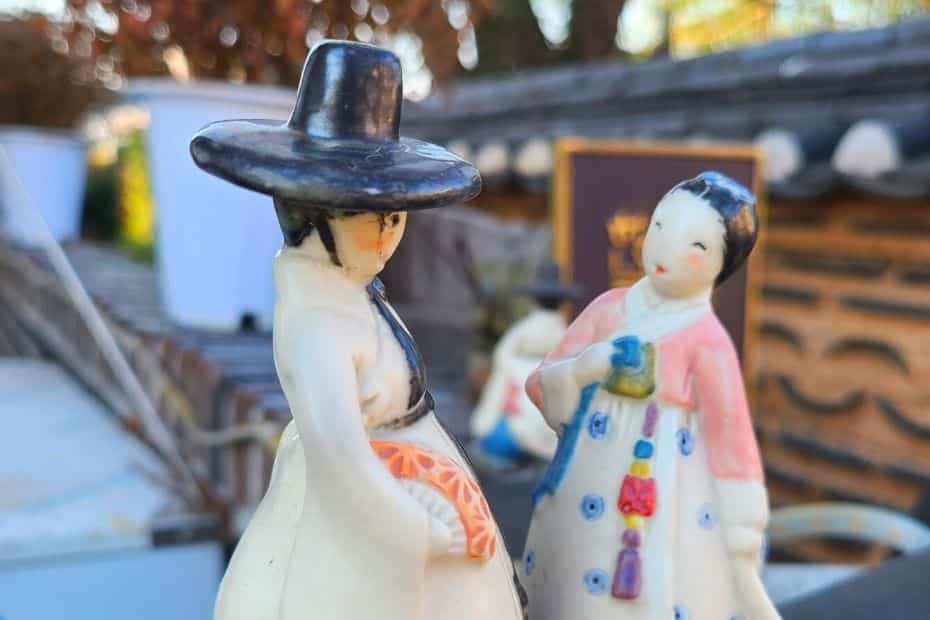
Korean etiquette rules, customs, and manners have developed over centuries, influenced various cultural factors. These factors include a strong hierarchy, Confucian ideals, and a sense of Han Spirit – a uniquely Korean emotion that embodies grief and resentment from centuries of suffering.
Not knowing about these uniquely Korean cultural rules can leave people feeling confused or upset when they travel to Korea or talk with Korean friends and encounter a situation or action they don’t understand.
This guide will stop you making embarrassing mistakes and cultural faux pas. It will also shine a light into the behaviour (hidden or open) of Korean people & society in general and help you understand why things happen the way they do.
This article covers a wide range of the most common Korean etiquette rules, customs, beliefs, and superstitions. It shows you how to display good manners and follow etiquette rules in various situations, such as when eating out, socialising, or at work.
In some sections there are Korean cultural insights and ‘reality checks‘ that show my opinion on these rules and how strictly they’re followed. I hope you’ll find them useful.
Now, here are the 35 tips that will teach you how to avoid being rude, how to follow Korean etiquette rules, how to show good manners, and how to make a good impression in Korea. Afterwards, there’s a guide to Korean culture and how it has shaped Korean etiquette. Be sure to read to the end.
I’m not Korean, nor have I formally studied Korean etiquette or culture in a professional manner. If there are any mistakes, I apologise and will correct them. The insights shared here are from what I’ve personally experienced from living in Korea since 2015, what I’ve learnt about from Koreans, and what I’ve researched from other sources.
These rules don’t apply to every single person or situation in Korea, and of course there are plenty of exceptions to every rule. This article is intended to introduce and explain common cultural differences you can witness in Korea and to help people understand more about Korean culture, etiquette and manners.
Planning to visit Korea? These travel essentials will help you plan your trip, get the best deals, and save you time and money before and during your Korean adventure.
Visas & K-ETA: Some travellers to Korea need a Tourist Visa, but most can travel with a Korean Electronic Travel Authorisation (K-ETA). Currently 22 Countries don’t need either one.
How To Stay Connected: Pre-order a Korean Sim Card or a WiFi Router to collect on-arrival at Incheon Airport (desks open 24-hours). Alternatively, download a Korean eSIM for you travels.
Where To Stay: For Seoul, I recommend Myeongdong (convenient), Hongdae (cool culture) or Gangnam (shopping). For Busan, Haeundae (Beach) or Seomyeon (Downtown).
Incheon Airport To Seoul: Take the Airport Express (AREX) to Seoul Station or a Limo Bus across Seoul. Book an Incheon Airport Private Transfer and relax to or from the airport.
Korean Tour Operators: Tour companies that have a big presence in Korea include Klook, Trazy, Viator, and Get Your Guide. These sites offer discounted entry tickets for top attractions
Seoul City Passes: Visit Seoul’s top attractions for free with a Discover Seoul Pass or Go City Seoul Pass. These passes are great for families and couples visiting Seoul – you can save lots.
How To Get Around: For public transport, grab a T-Money Card. Save money on Korea’s high speed trains with a Korea Rail Pass. To see more of Korea, there are many Rental Car Options.
Travel Money: Use money exchanges near Myeongdong and Hongdae subway stations for the best exchange rates. Order a Wise Card or WOWPASS to pay by card across Korea.
Flights To Korea: I use flight comparison sites such as Expedia and Skyscanner to find the best flights to Korea from any country. Air Asia is a good option for budget flights from Asia.
How To Learn Korean: The language course from 90 Day Korean or Korean Class 101 both have well-structured lessons and lots of useful resources to help you learn Korean.
What Is Considered Rude In Korea?
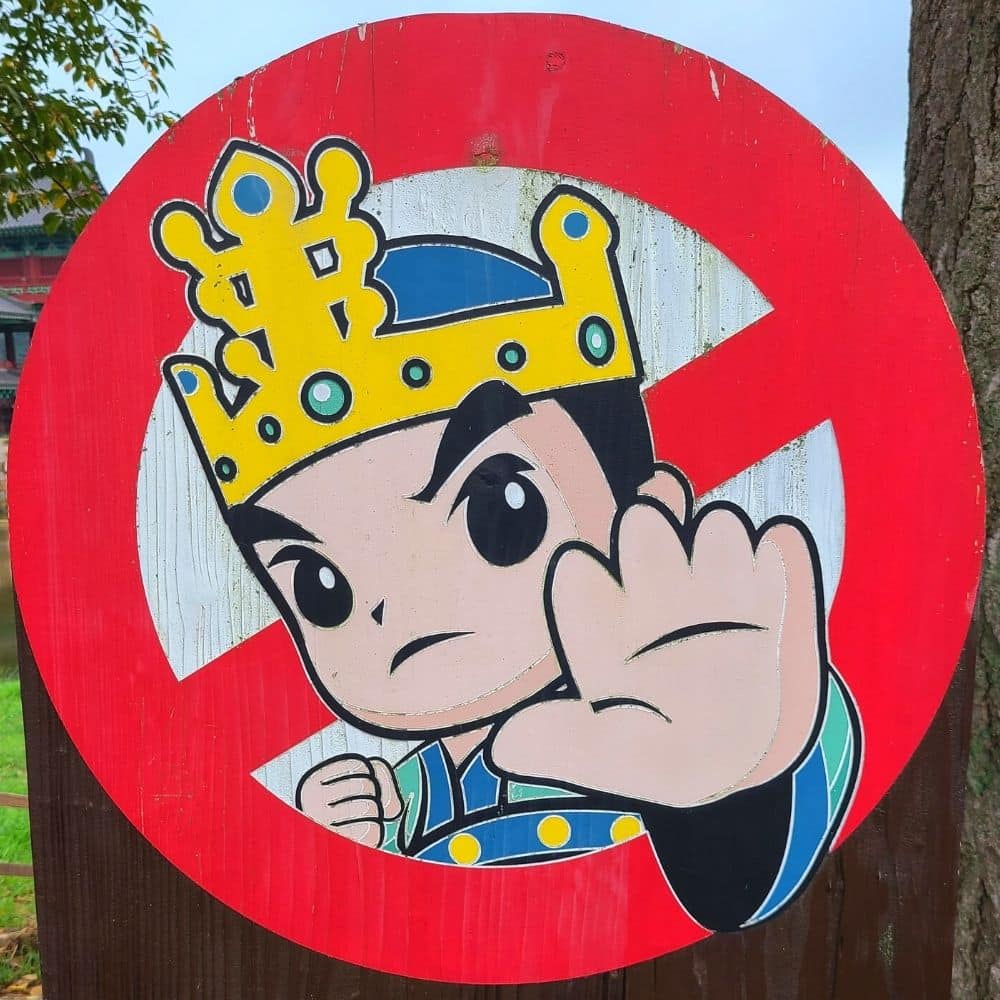
One of the most important things to know when travelling to a culturally distinctive place like Korea is how to avoid being rude. Knowing what is considered rude in Korea is not only useful to avoid difficult situations, but also to show Koreans that you’ve taken time to learn about their culture.
If it’s considered rude in your country, it’s probably considered rude in Korea. Things such as spitting, shouting, hitting people, swearing, and generally being obnoxious are definitely rude in Korea. I haven’t added them to this list as they should be obvious.
If you follow these rules and avoid these taboos, you will not only avoid cultural faux pas, you can start to make friends in Korea and show respect when you travel and engage with Koreans, at home or abroad.
1: Writing Someone’s Name In Red Ink
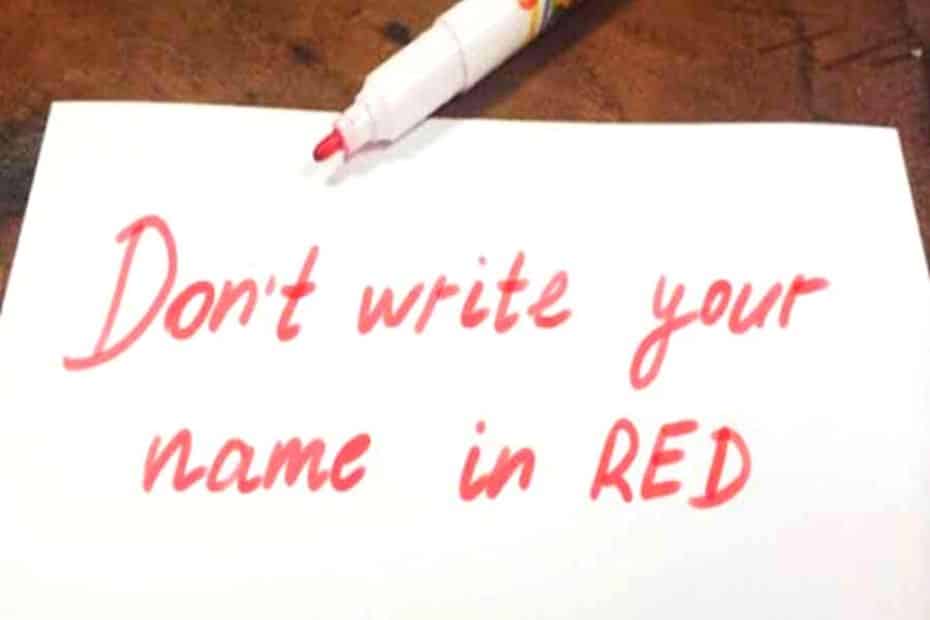
Koreans used to write the names of deceased people in red ink. Doing the same to a living person indicates that you either wish they were dead, or else want to do them harm.
This is a pretty serious etiquette mistake and I’ve been in trouble for doing it in the past. If you’re going to be writing in front of Korean people, be safe and stick to black or blue ink.
2: Wearing Shoes Inside Someone’s House
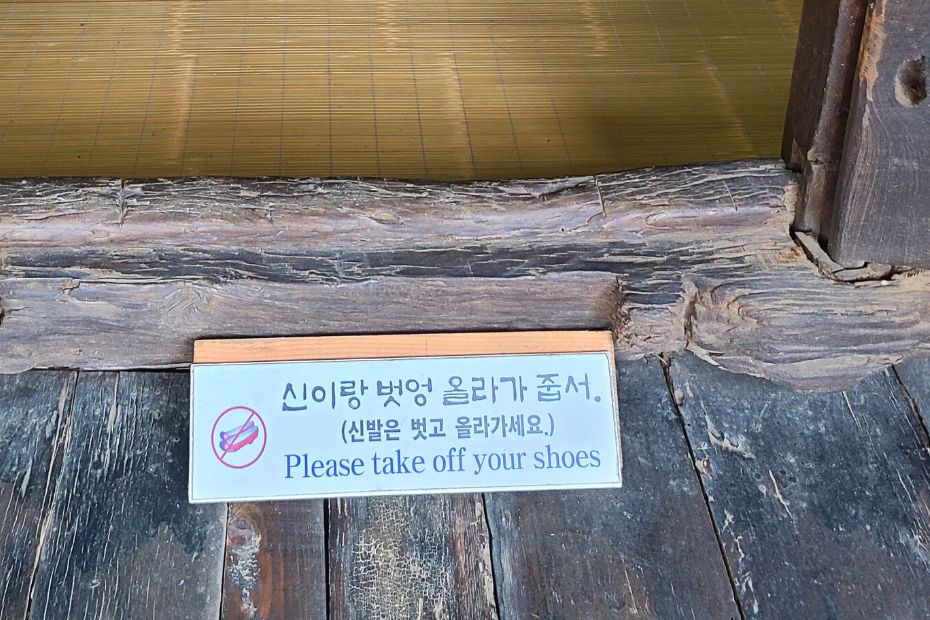
Every Korean house is a shoe-free area and it is considered rude to wear shoes inside someone’s house. It’s not only rude to wear your shoes into a Korean house, it’s also unlucky and dirty. Show good manners by removing your shoes when you enter.
Korean houses have a small area when you first enter that is for removing shoes. You can tell it because it’s lower than the rest of the floor. If you step up into someone’s house, that means you’re entering into a no-shoe area and you should take off your shoes immediately. There may be guest slippers you can wear, although that depends on the house you’re visiting.
3: Crossing Your Legs When Talking To Someone
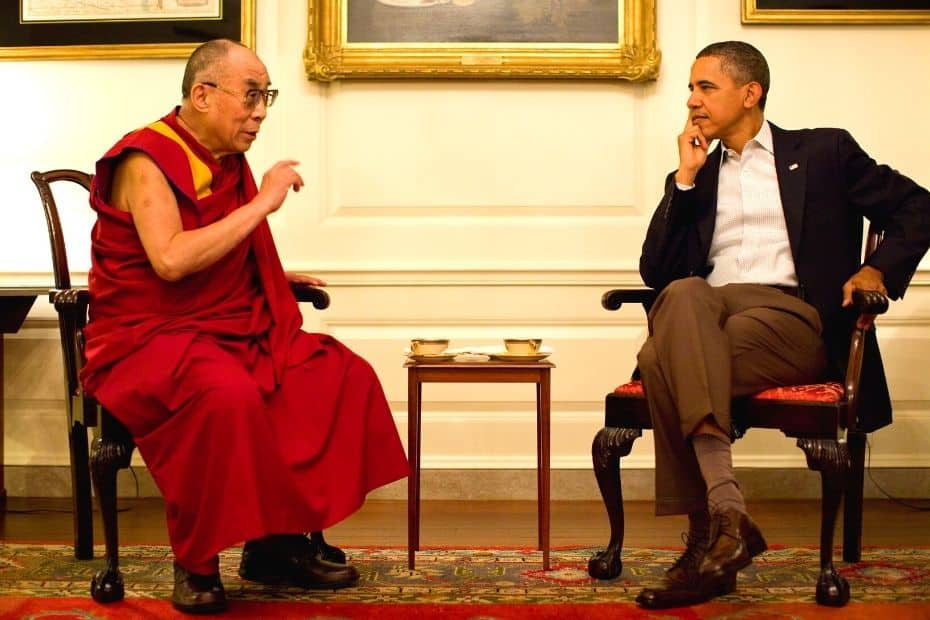
In Korea, it is considered rude to cross your legs in the presence of someone ‘superior’. In Korea, that means higher in society, either through their job or their age. It isn’t considered rude to cross your legs in front of friends and people of a similar (or lower) social standing as you.
It’s more acceptable to sit with your legs straight or open a bit. Crossing your legs is seen as being lazy or disrespectful to the other person. Therefore, you should sit up straight and keep your hands on your lap. Open body language shows honesty and attentiveness.
This can definitely be an issue in the workplace and a hard habit to break. If you’re travelling in Korea, don’t worry about it too much. If you’re on business, sit carefully.
4: Shaking Hands With One Hand And Not Two
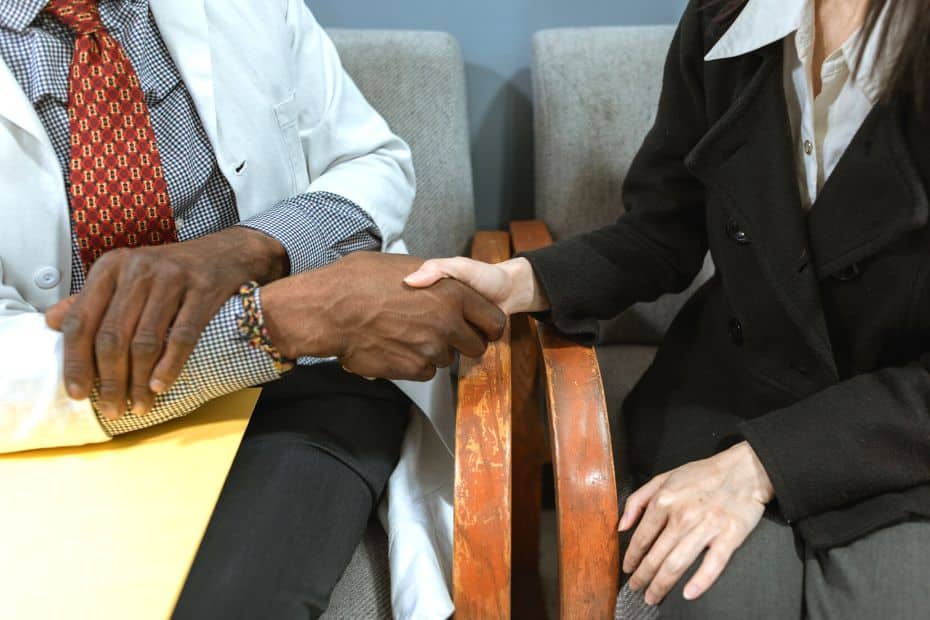
A one-handed handshake is certainly bad etiquette in Korea and you should instead shake with two hands. Why is it considered rude? This most likely goes back to times of court intrigue, where people showed both hands to prove they weren’t hiding any concealed dangers, such as a knife or poison.
There are several acceptable ways to shake hands in Korea, all of which include both hands. First, shake holding both hands. If that’s not appropriate, the left hand should be placed on the right wrist or between the wrist and elbow. Alternatively, tuck the left arm around the waist under the right arm.
In 2013, Bill Gates made the front-page of newspapers in Korea when he greeted the former Korean president, Park Geun Hye, with one hand in his pocket. He disrespected her by not using both hands.
5: Standing Chopsticks Upright In Rice
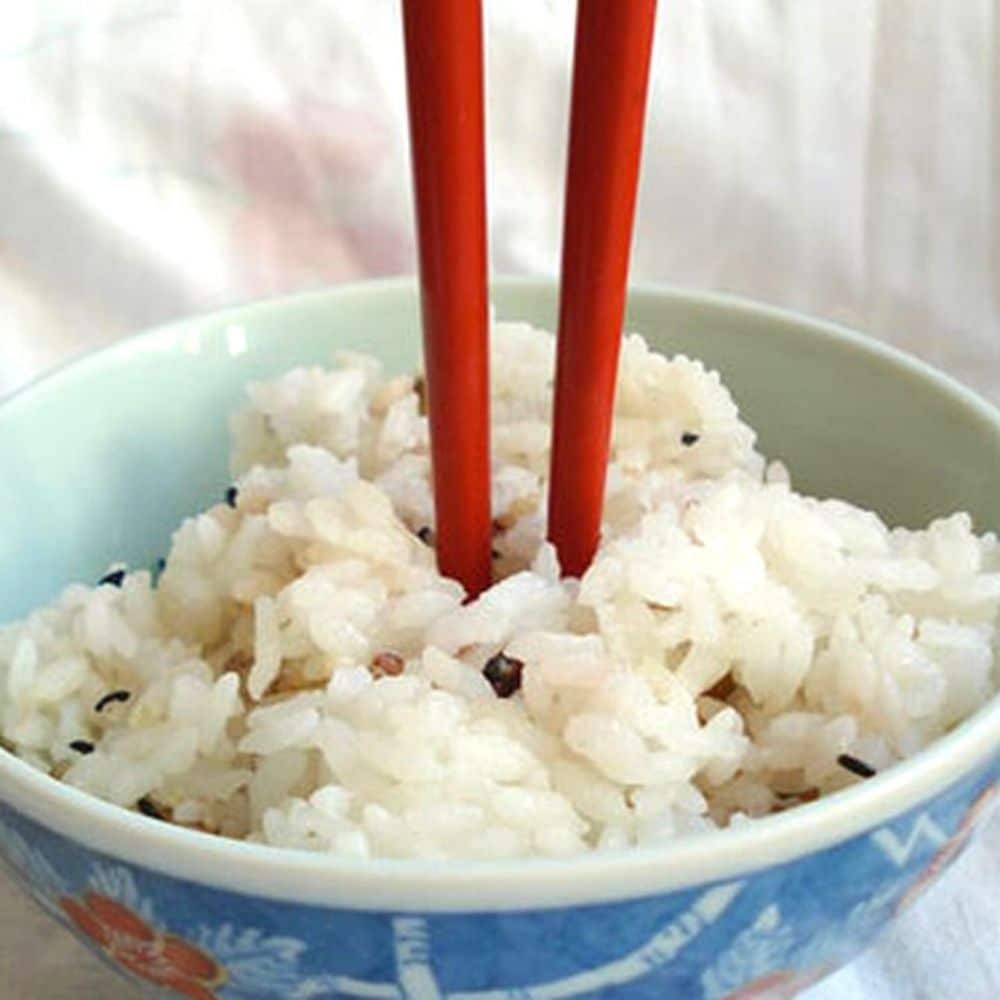
A definite Korean cultural taboo is sticking chopsticks upright in a bowl of rice. This action looks similar to incense sticks in funeral ceremonies and symbolises death. As with writing in red ink, this makes people think of death and is considered bad luck.
This applies to other countries where Buddhism is prevalent as it’s a Buddhist ceremony. Although Korea isn’t a predominantly Buddhist country, it’s still a superstitious one and upholds these beliefs. To avoid disrespect when eating, rest chopsticks on a napkin or bowl.
6: Pointing With A Finger
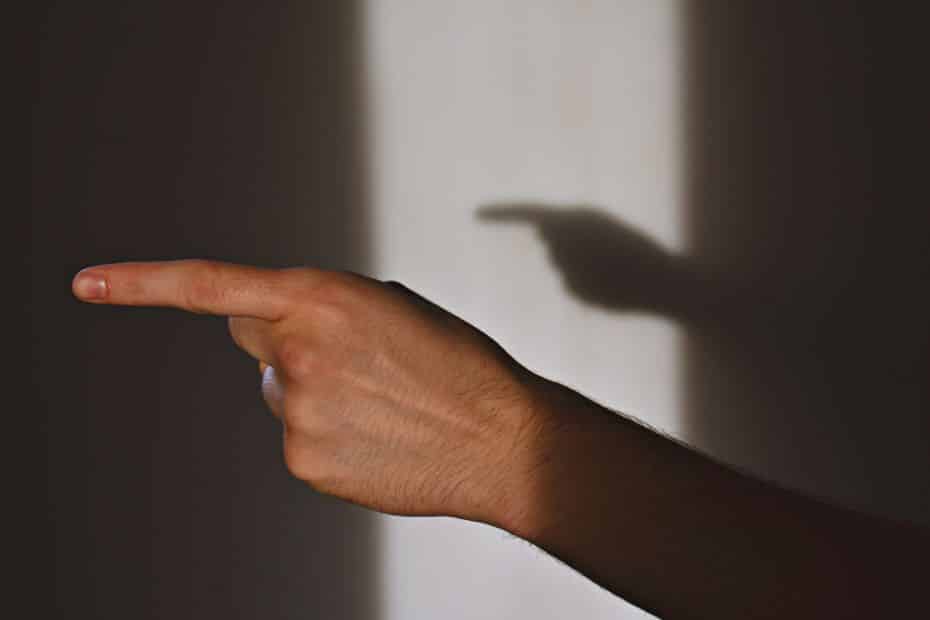
When gesturing in Korea, it is considered bad manners to point with one finger, especially the index finger. Instead, Koreans tend to use the whole hand when gesturing or motioning towards something.
To call someone’s attention in Korea, use the whole hand, palm face up. Bring the whole hand up as if clapping. Don’t use one finger. This is the opposite of what’s usual in Western countries where the palm is face down.
The middle finger is seen as rude, especially when stuck straight up at someone, just as it is in other countries such as the USA and UK.
7: The Number 4 Is Considered Bad Luck
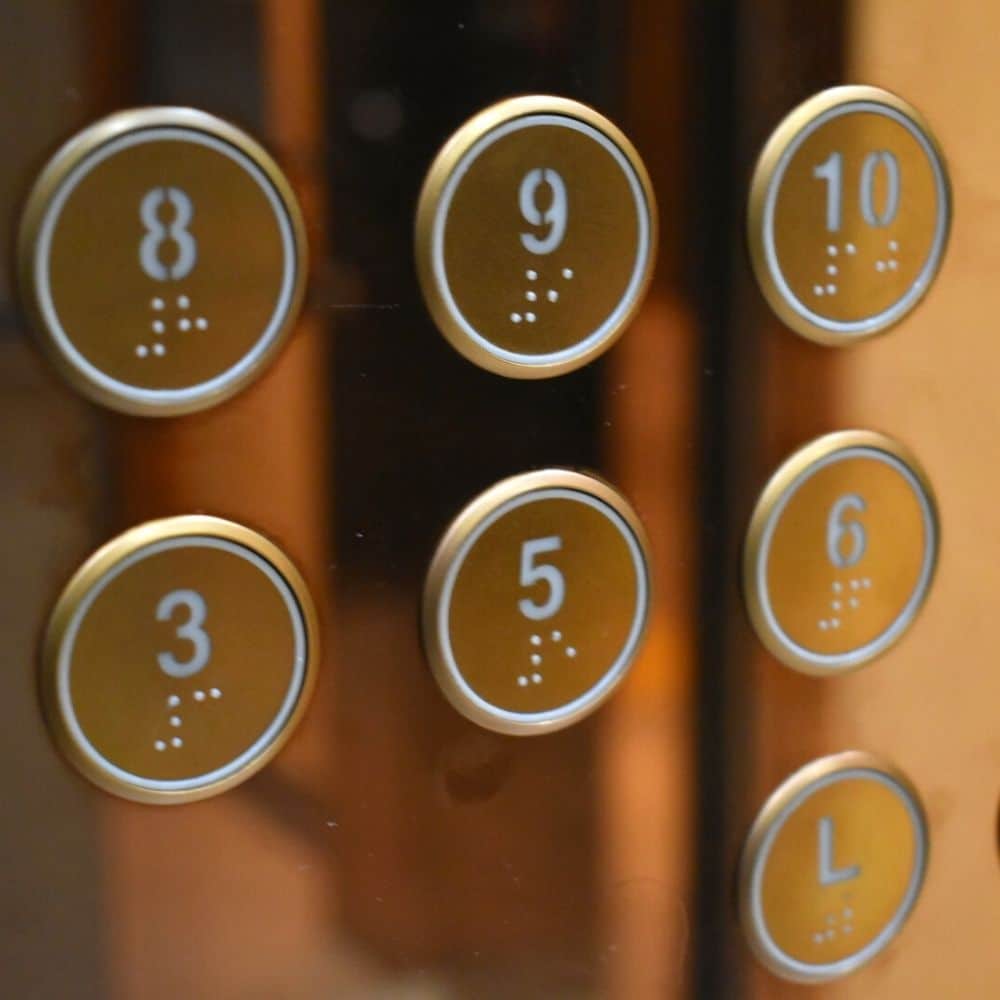
The number 4 is an unlucky number in Korea, just as 13 is in English speaking countries. Known as tetraphobia, the issue is serious in Korea. Koreans will go out of their way to avoid using the number, including removing the number 4 from elevators, restaurant tables, and even whole apartment blocks.
The Korean superstition surrounding the number 4 originates from the sound made when saying ‘four’. This word sounds the same as the word for ‘death’. In Korean they are both pronounced as ‘sa‘.
This is an issue in several countries, including China and Japan, as they use the same Chinese characters for these two words.
You won’t upset or embarrass anyone by writing the number 4. It’s an unavoidable number. Being aware of this fact helps you understand Korean culture.
8: Saying No When Asked To Do Something
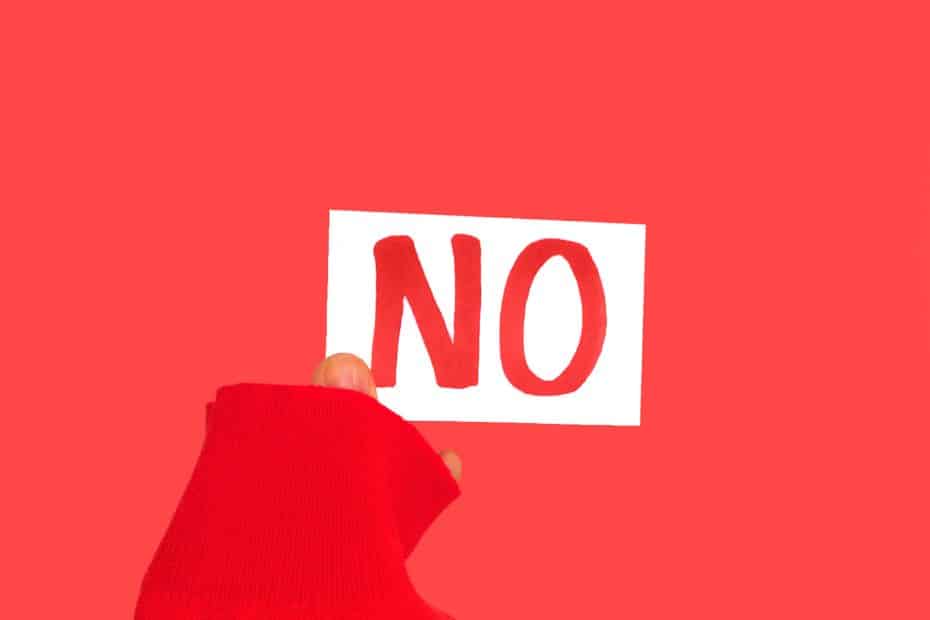
When someone in Korea asks you to do something, it is considered rude to say no. For example, if a friend invites you to their house, or to go to an event, it’s bad manners to refuse. This doesn’t mean that it is necessary to agree to do everything that someone asks, but consideration should be made about how to turn down an offer. An excuse or false agreement is better than a straight up refusal.
This issue is rooted in a subtle aspect of Korean culture known as kibun, which has no English translation, but generally refers to someone’s sense of pride or face. By refusing to agree to something, you damage their kibun and damage the group harmony. Korean people want to avoid that, so they try to agree or find ways to get out of a difficult situation without saying no directly.
There are Korean cultural insights that will help explain this issue later on, including the concept of kibun and how Korean society operates harmoniously. Keep reading to find out more about these and other Korean etiquette rules, customs, and manners.
As a visitor to Korea, don’t feel obliged to say yes to everything. If you have to say no, try to help the other person save face if possible. Likewise, try not to pressure people into agreeing to do something. They may find it impossible to refuse.
Korean Etiquette Rules When Dining Out
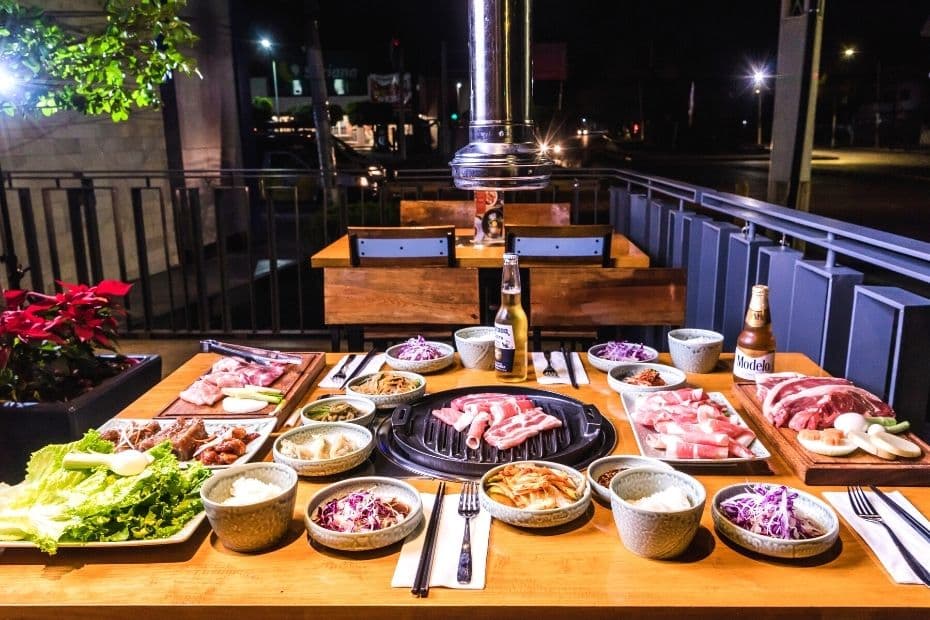
This next section introduces some important Korean etiquette rules when dining out that will help you if you plan to eat out with Korean friends both in your own country and in Korea.
Several of these rules are common sense or manners, such as not pointing with cutlery, others might seem a bit strange or confusing. Understanding the cultural reasons behind these rules can help make your Korean dining experience more comfortable.
When you’re travelling and eating out with other foreigners, don’t worry too much about these rules. These are guidelines for eating with Koreans and not being rude.If you’re worried about what to say when dining, check out my guide to Korean phrases for eating out. You can find out how to order food, how to talk about what you like and don’t like, how to pay, and lots more.
9: Take Your Shoes Off In Restaurants
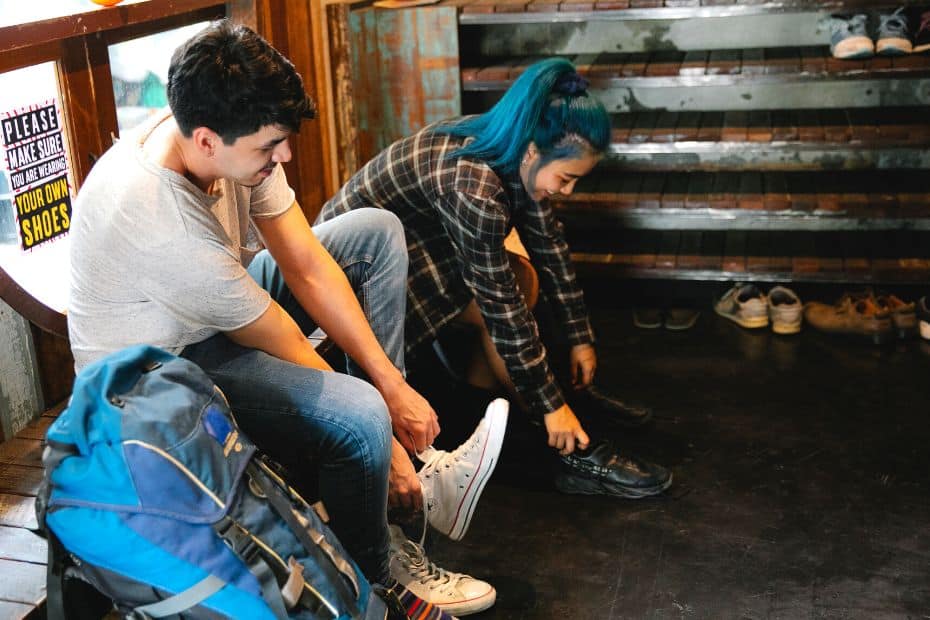
It’s bad Korean etiquette to enter a Korean restaurant and walk around with shoes on. It is required to remove them when entering a restaurant and then either walk around in socks, or else slippers will be provided.
The main reason to remove shoes is because traditional restaurants have low tables and people sit on the floor. As everyone sits close together with their feet under the table, this will be uncomfortable and bother others. The other reason to remove shoes is to avoid getting dirt everywhere.
When someone needs to use the bathroom in Korea, there will be a special pair of bathroom slippers they can use so they don’t need to put on their shoes again. Don’t forget to take off the bathroom slippers when leaving the toilet or it’ll certainly cause an unforgettable scene in the restaurant.
This is only common in traditional Korean restaurants and other restaurants let you keep your shoes on. You will only need to take your shoes off in traditional cafes in hanok houses, too.
10: Help Others Before You Help Yourself
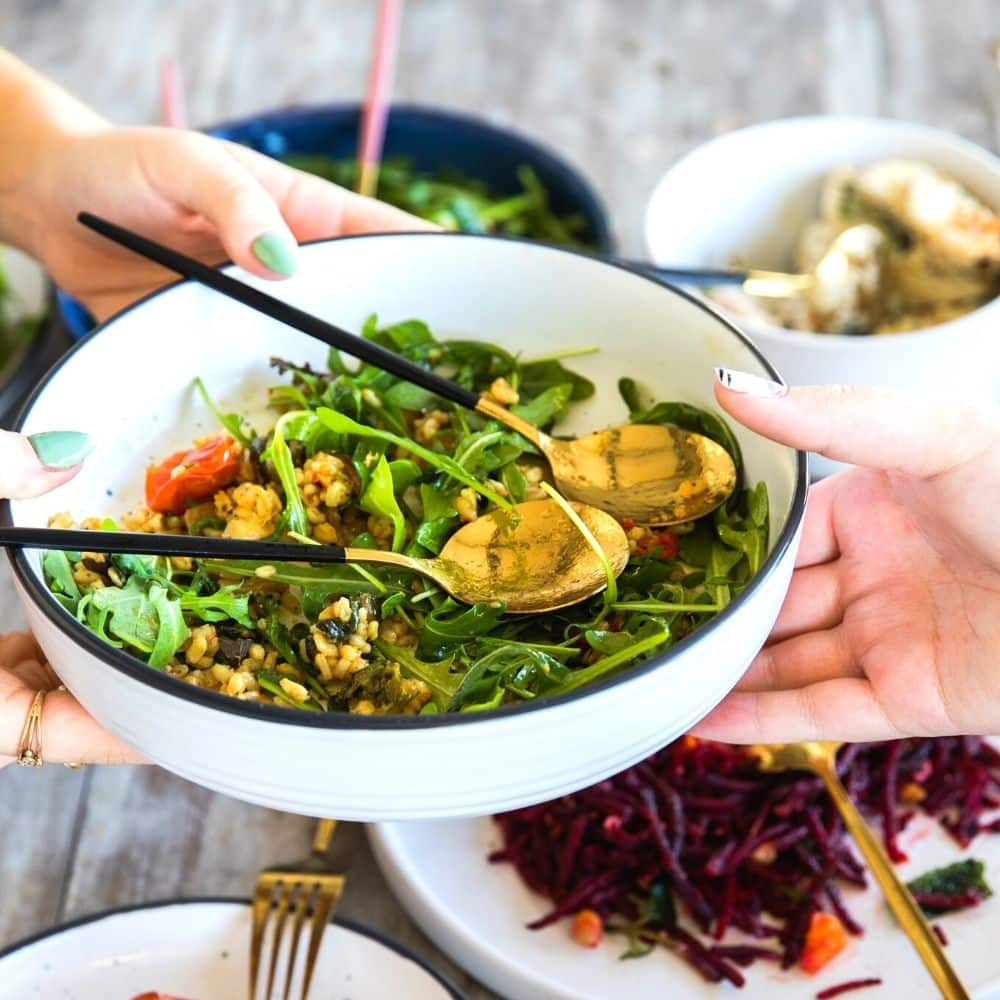
This Korean etiquette rule applies to a couple of things when eating out. First, one person at the table will give out the cutlery (chopsticks and spoon) to other people at the table, serving themselves last. This is usually the youngest person at a work dinner.
The cutlery in Korean restaurants is placed in a box on the table, or in a draw on the side of the table, along with napkins and wet tissues. Place a napkin on the table and then place the cutlery on top to keep the cutlery clean.
The second meaning of this rule is when serving food and drinks. Offer other people food and drinks before yourself. This is especially important in a work setting when dining with senior members of a company or with older relatives.
11: Wait For Elders To Be Seated First
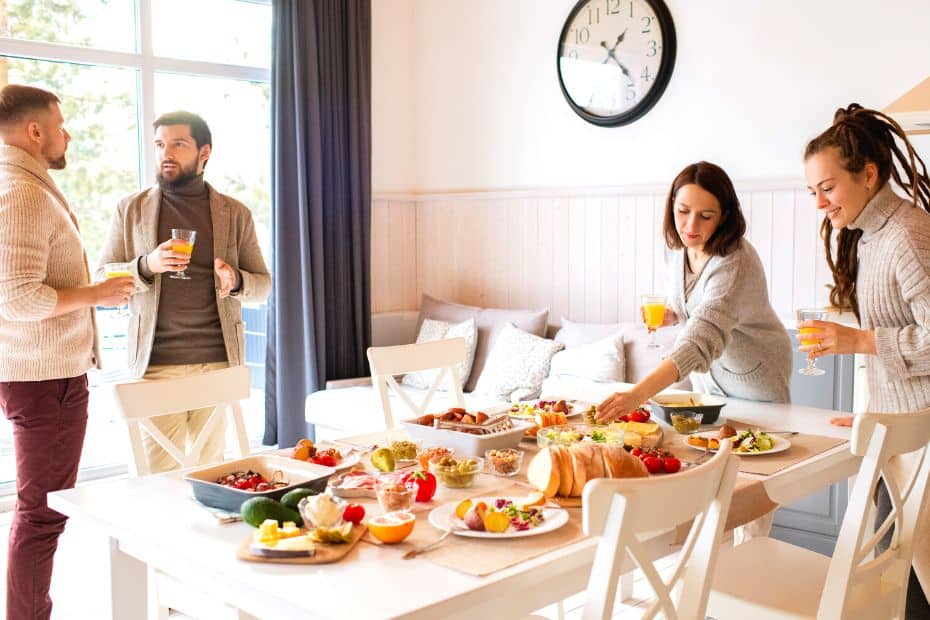
Similar to the previous Korean etiquette rule, it is considered rude to sit down before the more senior or elderly members of the group have been seated.
The senior people will typically take the central area of a table, with less senior members spreading out to the sides. When foreigners join Korean work parties, they may be offered a place in the centre alongside the senior members. This is a sign of respect.
At work events, this means standing near the table and waiting for the senior members of the team to arrive before sitting. Once they arrive, everyone will take their seats.
Korean employees may attend meals early so they can show their enthusiasm by waiting for the boss. This is generally better than turning up late, which could be considered rude.
This only applies in formal situations. If you’re eating lunch with a friend, you don’t need to wait for them to sit first if they’re older than you.
12: Don’t Eat With Your Fingers Or Lick Them
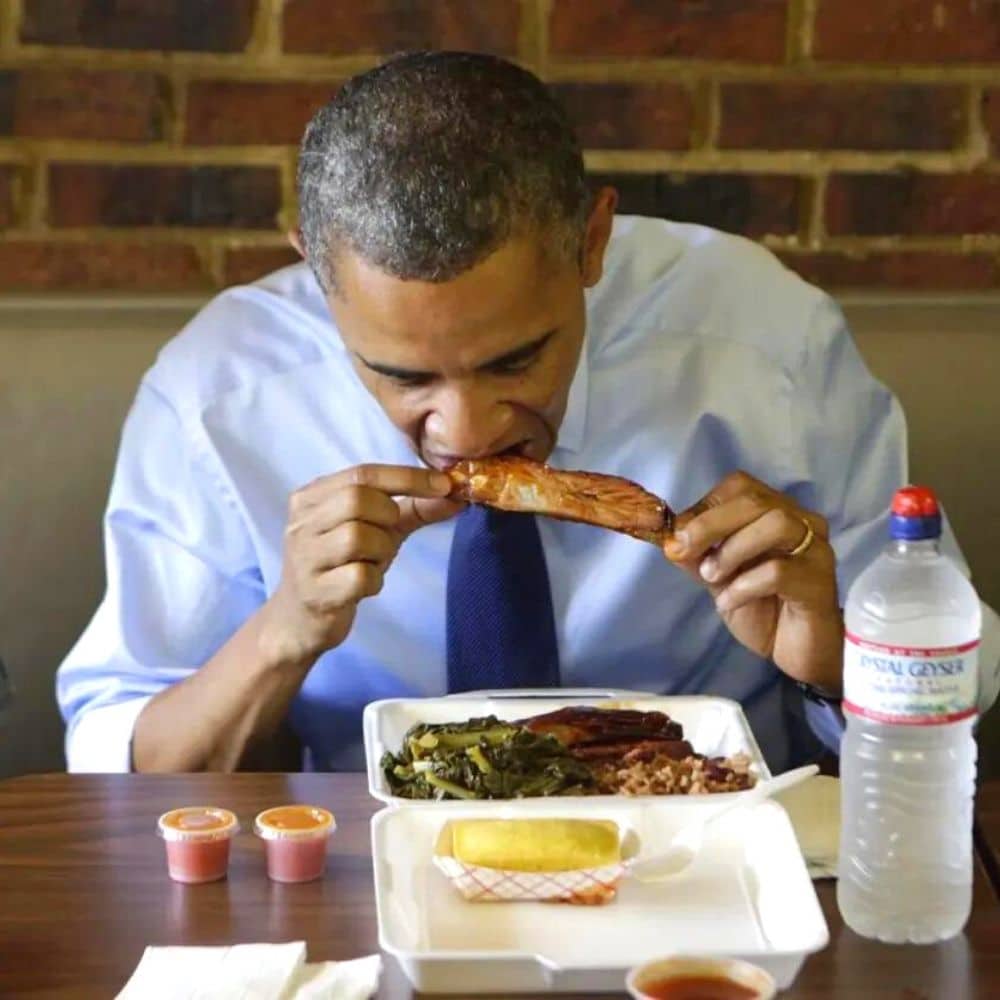
Using fingers to eat in Korea is bad manners and chopsticks or other cutlery should be used whenever possible. This applies for difficult to eat foods such as chicken wings, ribs, and pork cutlets. This also applies to Korean side dishes, which are called banchan. They’re not finger food.
These foods should be cut up or taken apart when possible, which is a difficult task for people not used to using chopsticks to eat. Fortunately, most Korean meals involve small portions that can be picked up and eaten using chopsticks, as well as sticky rice.
Licking fingers is considered bad manners in Korea and it should be avoided when possible, especially when eating in public. There are wet or dry tissues for cleaning dirty hands and fingers. Tissues can also be used to hide leftover bones, which is politer than leaving them on a plate or table.
It’s almost impossible to eat traditional Korean dishes like samgyeopsal (Korean BBQ) without using your fingers. You don’t need to use chopsticks for foods that involve wrapping things in leaves or Western foods such as hamburgers, which you definitely can’t eat with chopsticks.
13: Don’t Point With Your Chopsticks

Chopsticks are very flexible and can be used to eat a wide range of food with a bit of practice. However, there are some things definitely shouldn’t be done with chopsticks, including the aforementioned taboo of sticking them upright in rice.
Using chopsticks to point at other people is considered rude in Korea and should be avoided. When eating with chopsticks, try to keep them pointed downwards or place them on a plate, bowl, or napkin on the table.
Try to avoid gesticulating wildly with chopsticks when eating. The same rule applies when talking closely with someone else, don’t wave your arms around too much as this is considered rude and disrespecting someone’s personal space.
14: Use Two Hands When Pouring Drinks For Others
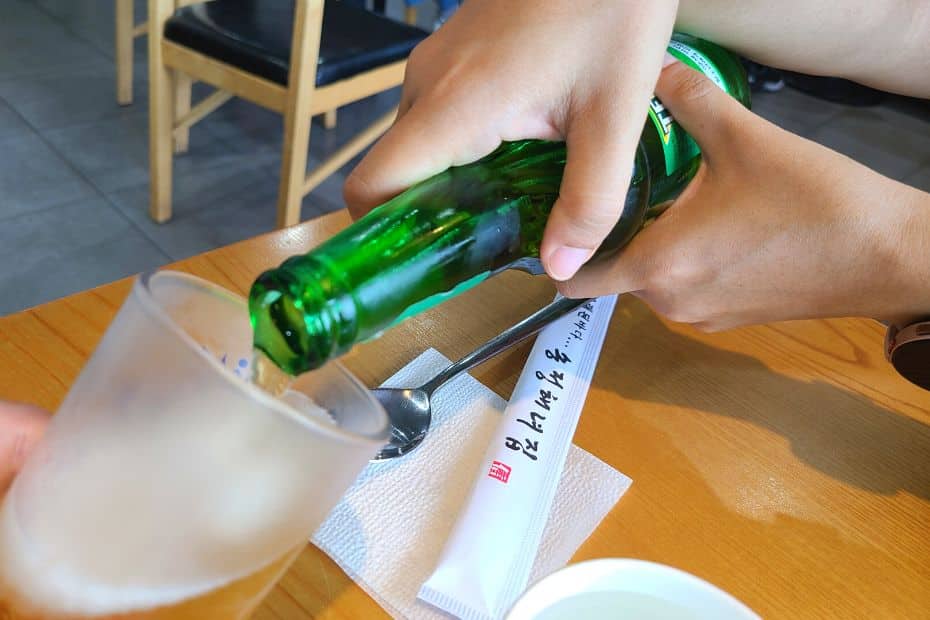
When pouring drinks for others, pour with two hands. As with shaking hands, the second hand can be placed on the pouring hand, wrist, arm, or under the arm on the waist.
This is another uniquely Korean etiquette rule that probably originated at the same time as the rule for shaking with two hands. If both hands are visible, one can’t be used to conceal anything dangerous.
15: Don’t Pour Your Own Drinks
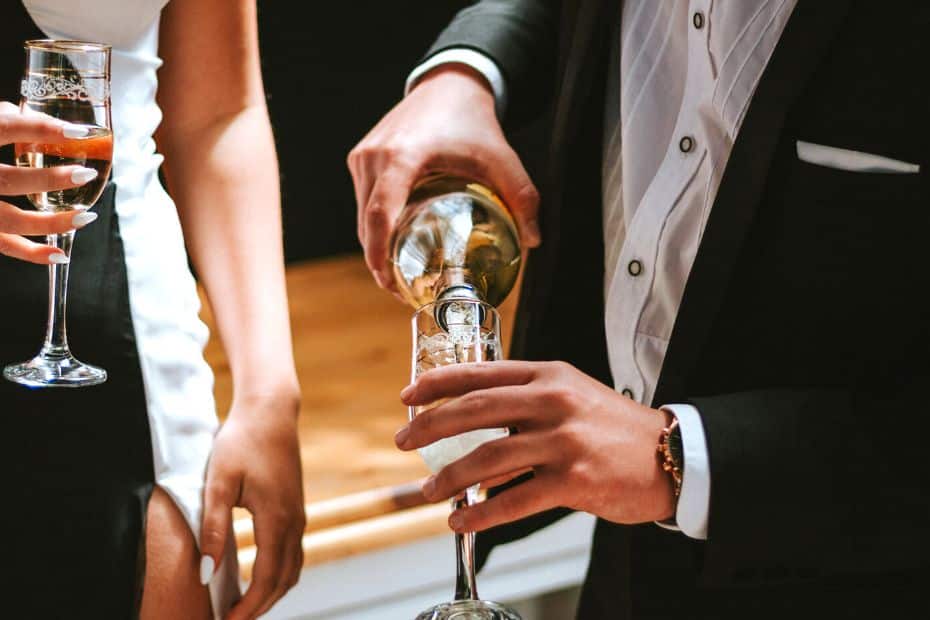
As well as pouring drinks with two hands, Korean etiquette states that you shouldn’t pour drinks for yourself. When out with other people, pour their drinks first and then they will return the favour.
Korean work meals typically involve beer and soju. This involves a lot of pouring during the evening and it is common for people to move around the room pouring drinks (usually soju) for other people. The other person will pour a shot of soju for them in return.
This causes a socially harmonious situation where everyone is offering and accepting drinks from each other and is a key part of a Korean work dinner. This can also happen in social occasions, but with less pressure to impress others.
It is said that pouring your own drinks will result in bad luck. This probably helps reinforce that other people should be pouring for you and not to be selfish by pouring your own drinks.
16: Look Away When Drinking A Shot
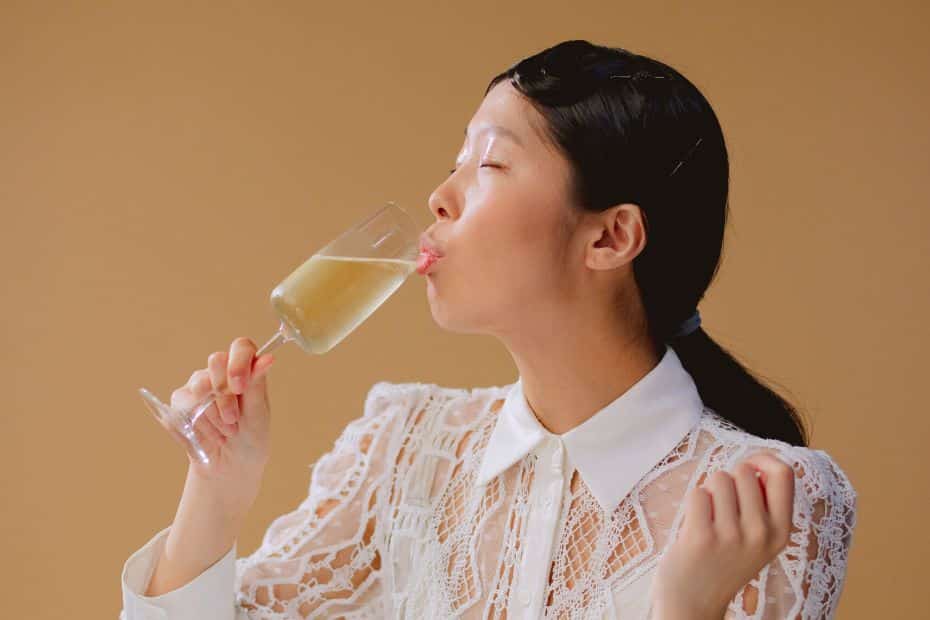
During work and social events, it is common to make a toast and drink a shot of soju or glass of beer. It is bad manners in Korea to look at other people as you down your shot or beer. The polite way to drink a shot is to turn your face away and drink, then turn back to look at everyone. Staring at someone when drinking is bad manners.
Covering your mouth when drinking in Korea is also considered polite, although it is not as commonly practised as turning away. Drinking from a bottle without it touching your lips, letting it drop into your mouth, is also common in Korea to avoid germs.
17: Clean Up Your Own Mess
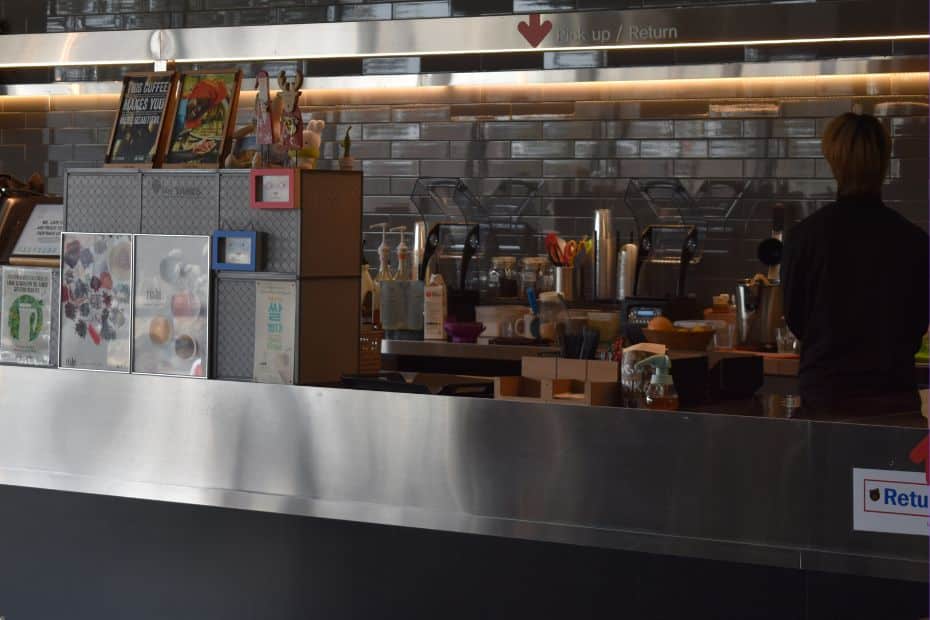
At restaurants and cafes in Korea, it is common to clear away your own cups and plates when finished. There is usually a ‘return’ area near the main counter or food delivery area, or a separate counter with recycling and trash.
In cafes, it is normal to return used cups and empty any remaining liquids into a special bin, as well as split different items by material type (plastic / paper). Mugs and glasses can be left in the same area.
If a Korean restaurant offers table service, you don’t need to clean away your own plates. If you have to go up to a counter to order and pay, you might be expected to clean up.
Having to clear your plates away is one of the reasons you shouldn’t tip in Korea, which is the topic of the next part of this Korean etiquette guide.
This rule mostly applies to small restaurants, fast food chains, and cafes. If you’re out for a meal like Korean BBQ or something that involves lots of dishes, just leave them where they are.
Should You Tip In Korea?
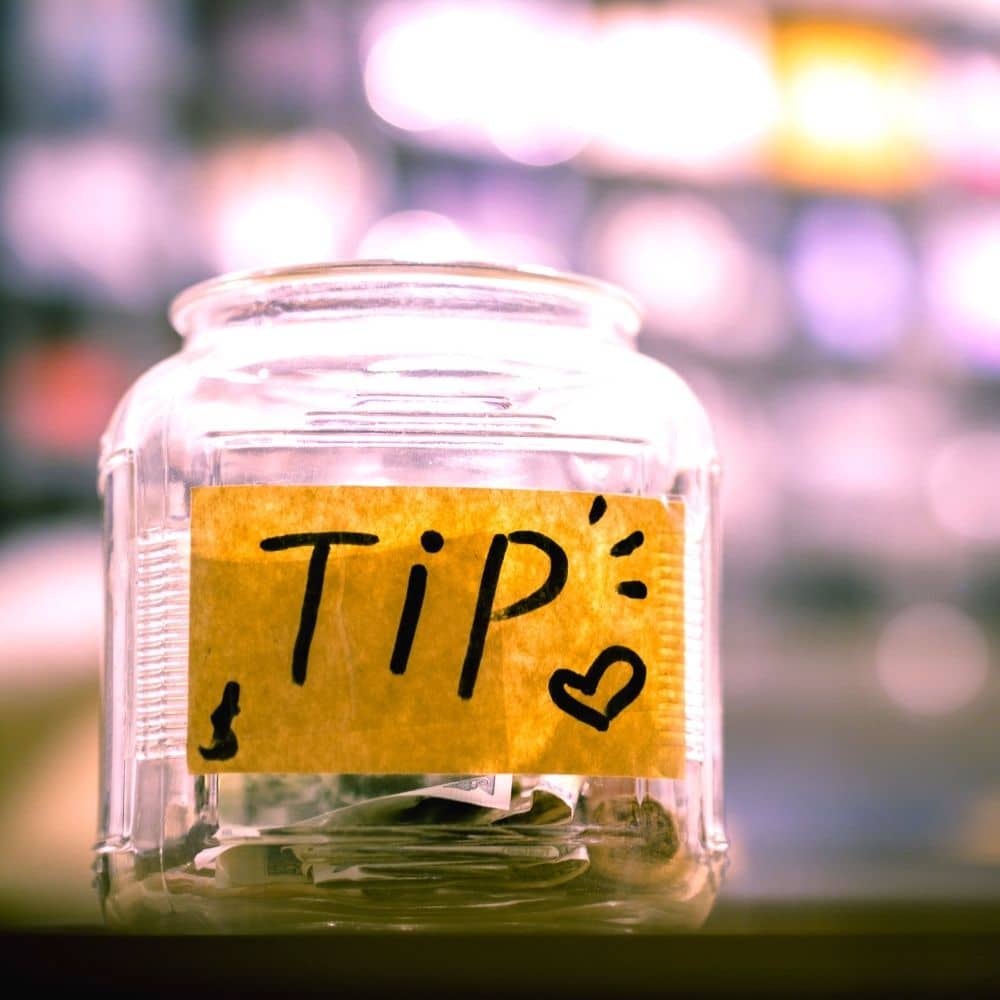
One question many people ask when travelling to Korea is should you tip? In some countries it’s quite common, but in Korea tipping is not customary at all. Tipping in Korean restaurants and cafes doesn’t happen and there are usually no options to leave a tip.
The price on a menu is the price you’re expected to pay. Tax is included and won’t be added later. It’s not common to see tip jars in Korea, although some bars and independent cafes may have them near the till.
Why don’t people tip in Korea? There are a few cultural reasons why tipping isn’t common. Firstly, it never entered into society and people aren’t used to paying more than the price stated. Prices include staffing costs and therefore tips aren’t necessary.
Providing good service is part of maintaining social harmony and being rude to customers would result in people losing face and society not following its core Confucian ideals. Therefore, there should be no need to tip for good service as it’s always provided.
Indeed, tipping one person would require tipping others, or else societal disharmony may occur. Tipping everyone isn’t practical, so the best option is not to tip at all.
Should you tip in Korea? No.
Leaving a tip in a Korean restaurant can result in the money being returned or awkwardness for the person receiving the tip. Avoiding awkwardness in Korean society is going to be more valuable than a tip.
If you live in Korea and want to thank someone for providing a service, like installing a washing machine or fixing your computer at work, small gifts are usually given. Small gifts include a baked good, a bottle of juice, and things like that.
In my experience, it’s not worth trying to leave a tip in Korean restaurants. Even saying ‘keep the change’ is met with confused stares and demands to take money back. I’ve had staff leave the restaurant and catch me on the street to return tiny sums that have been overpaid. It might be culturally strange to you, but try to adapt to local customs when visiting to Korea.
When Can You Tip In Korea?
Despite tipping generally being avoided in Korea, there are times when tipping is allowed. Upmarket restaurants and hotels will sometimes add a service charge when dining or drinking there. This is a mandatory ‘tip’ rather than an accepted gratuity.
The other time when tipping is acceptable in Korea is when someone provides a personal service, such as a tour guide. Tour guides, who are used to working with foreigners, are often happy to accept tips and giving them a tip can really help them.
If you’re not sure if a tour guide accepts tips, you can ask them. Try to be discrete and wait until the end of the tour before approaching the subject of tipping.
Socialising Culture & Etiquette In Korea
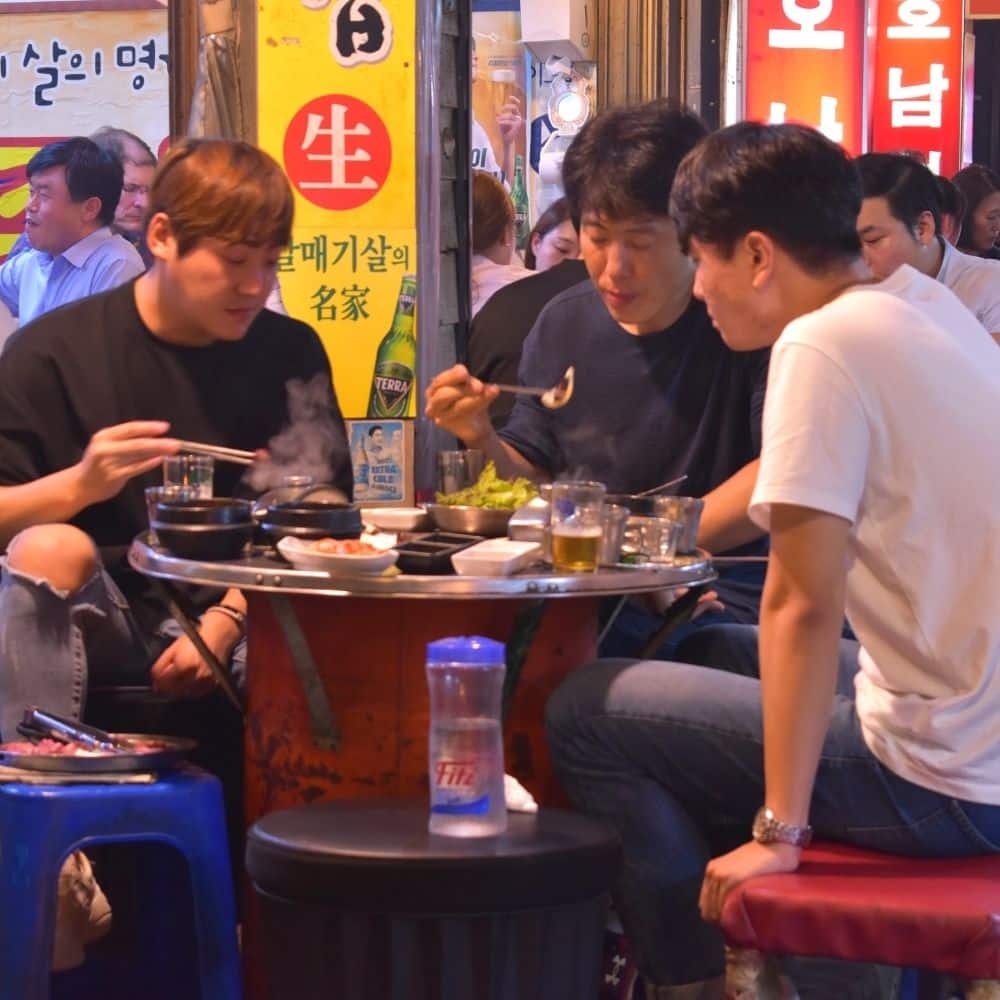
Want to feel comfortable when socialising with friends in Korea? Want to avoid making other people embarrassed and uncomfortable when you go out together or visit their home?
These Korean etiquette rules for socialising will show you how to make friends in Korea and avoid upsetting others. A good first impression will certainly go a long way to breaking down cultural barriers and showing the other person you understand their culture.
These rules are a bit more relaxed than what you’d expect to find in a professional setting, such as an office, or when meeting someone’s family. In reality, these rules could be completely ignored by some Korean people, typically the younger generations, but it never hurts to be prepared and err on the side of caution when in a new culture.
18: Avoid Personal Names Until Introduced
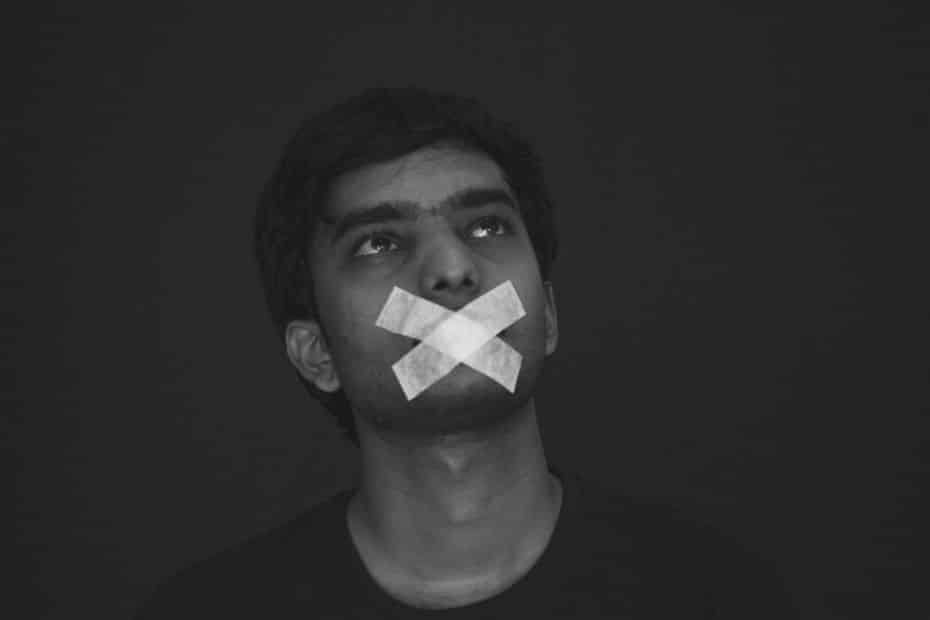
When meeting someone for the first time, it’s best to refer to them by their title (doctor, teacher, etc.) or their family name (Mr. Kim, Mrs. Song, etc.) Using someone’s first name shows a familiarity with that person that could be considered rude.
Using a professional title is a sign of respect and, traditionally, professionals such as teachers and doctors were well respected members of society. This isn’t so applicable when greeting a tour guide or hotel employee, or even a friend you met online.
The safest option when meeting someone in Korea is to use their formal title or full name until they’ve used your personal name or you feel it’s safe to call them by their first name. When you’ve been introduced, you should be familiar enough to use first names.
This rule is found in other countries and is typically more of a personal preference. Some people are comfortable with others using their first names, others aren’t. Ask if you’re not sure.
19: Bow Or Shake Hands To Greet People
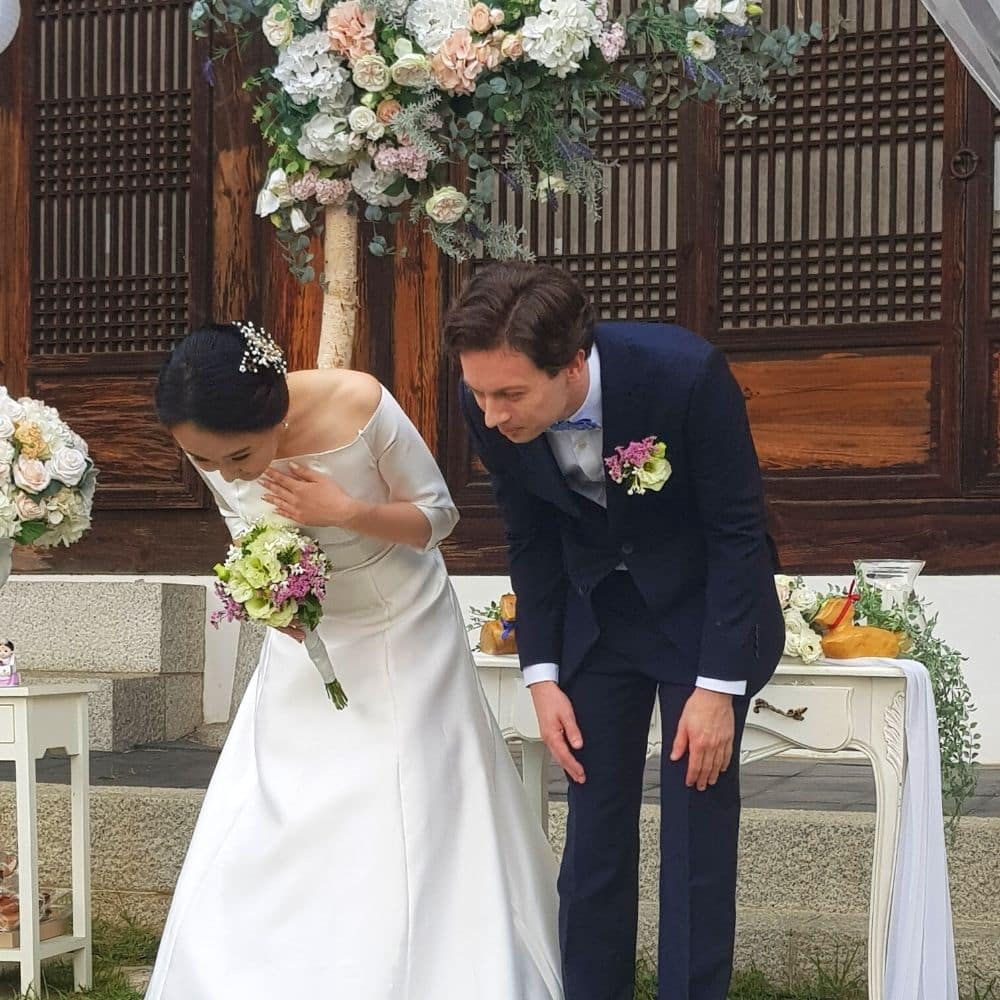
To make a good first impression in Korea, give a two-handed hand shake or a small bow. A bow is a safe option for greeting strangers and is practical when greeting lots of people at once. A deep bow is not necessary when greeting people, a small tip forward is enough.
When socialising with Korean friends, a hand shake is a more comfortable option and shows friendliness. A bow is also fine, especially when holding things. If in doubt, let the Korean person make the first move so you know what they’re comfortable with.
20: Avoid Close Physical Contact
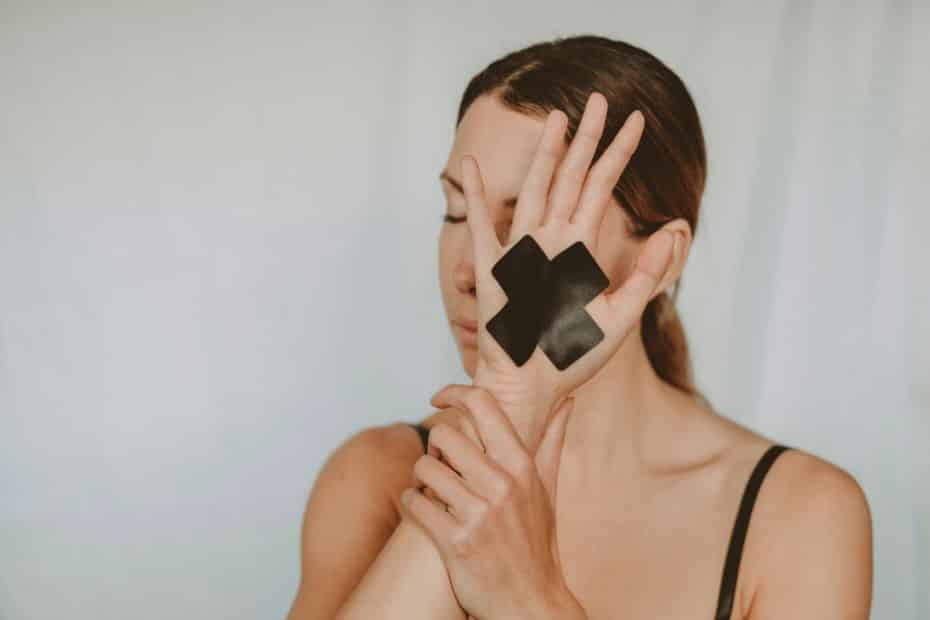
Handshakes and bows are acceptable greetings, but greeting someone with close physical contact, such as hugging or grabbing hands or arms, is bad Korean etiquette.
Hugging strangers is certainly bad manners in Korea and will most likely make the other person extremely uncomfortable, especially when in public. Close physical contact is generally reserved for friends and family.
Once you’ve become friends with someone in Korea, you can set your own boundaries. If you’re both comfortable hugging or other close physical contact, then it’s fine. Close physical contact between couples is a bit different and will be discussed later.
Close physical contact between people of the same gender is normal in Korea and you often see women walking around hand in hand or a teenage boy sitting on another boy’s lap. In a Korean sauna, boys will scrub their father’s backs and vice versa.
21: Respect Other People’s Personal Space

Similar to avoiding close physical contact when in Korea, it’s also good manners to respect other people’s personal space. This means not standing too close to them, waving your arms around near others, or generally moving your body in a way that could make others uncomfortable.
For example, if you’re socialising with Korean friends, don’t keep touching someone’s shoulder or waving your arms around in front of them. Korean people generally wouldn’t do it unless very close to another person as it could cause them to lose face.
Due to traditional Korean societal norms, which will be explained in more detail later, invading someone’s personal space not only embarrasses that person, it could also cause disharmony in the group and result in an uncomfortable situation.
This etiquette rule is (or should be) common in most countries and you should always respect other people’s personal space. Etiquette rules tend to be broken when lots of soju has been consumed.
22: Bring A Gift When Invited To Someone’s House
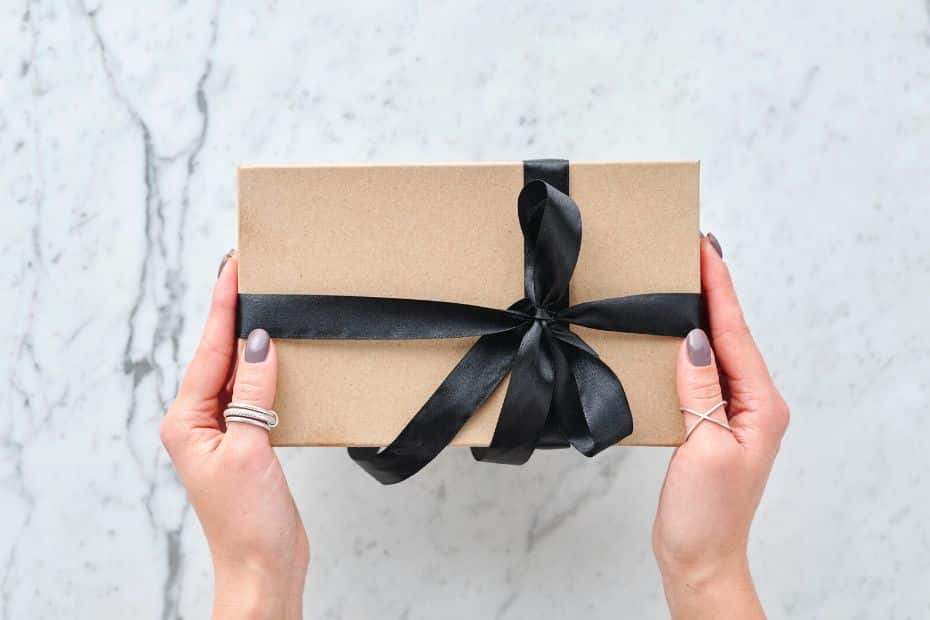
When someone is invited to a Korean person’s home, it’s good manners to bring a gift for the host. This is a sign of respect and gratitude to the person for being invited to their personal place. Bringing a gift will help you make friends and will please the host.
Good gifts for visiting someone’s house in Korea include baked goods, sweet treats, or a small bouquet of flowers. Something that can be used at that time is generally acceptable. Don’t spend too much, however, as this places a social burden on the other person. Wrapping is always welcome.
Check out the gift giving section at the end of this article to learn customs and etiquette rules that will help you choose the right gift and give it correctly.
23: Give And Receive With Two Hands
Giving and receiving gifts in Korea should be done with two hands. Present the gift to the other person, extending it forward and wait for the other person to accept it.
In Korea, it’s considered impolite to open the gift in front of the gift giver, so don’t be surprised if they place it somewhere out of sight or take it to another room to open. If the gift is something to be eaten right away, it’ll probably be taken to the kitchen so it can be served on a plate.
24: Remember To Return The Favour

A key concept of Korean culture is societal harmony. This is seen in many parts of Korean culture, including gift giving. If a Korean person receives a gift, especially in public, they feel obliged to return the favour.
If you want to show you understand Korean customs, return the favour and give a gift after someone gives you a gift. However, try not to spend more than they did, otherwise this places the burden back on the other person to buy yet another, more expensive gift.
You don’t need to give a gift back when someone buys you a birthday present or when you leave a job or in a similar situation. The idea is that you will pay forward your gratitude when other people have birthdays or someone leaves work. Weddings and funeral work in the same way.
Etiquette Rules When In Public
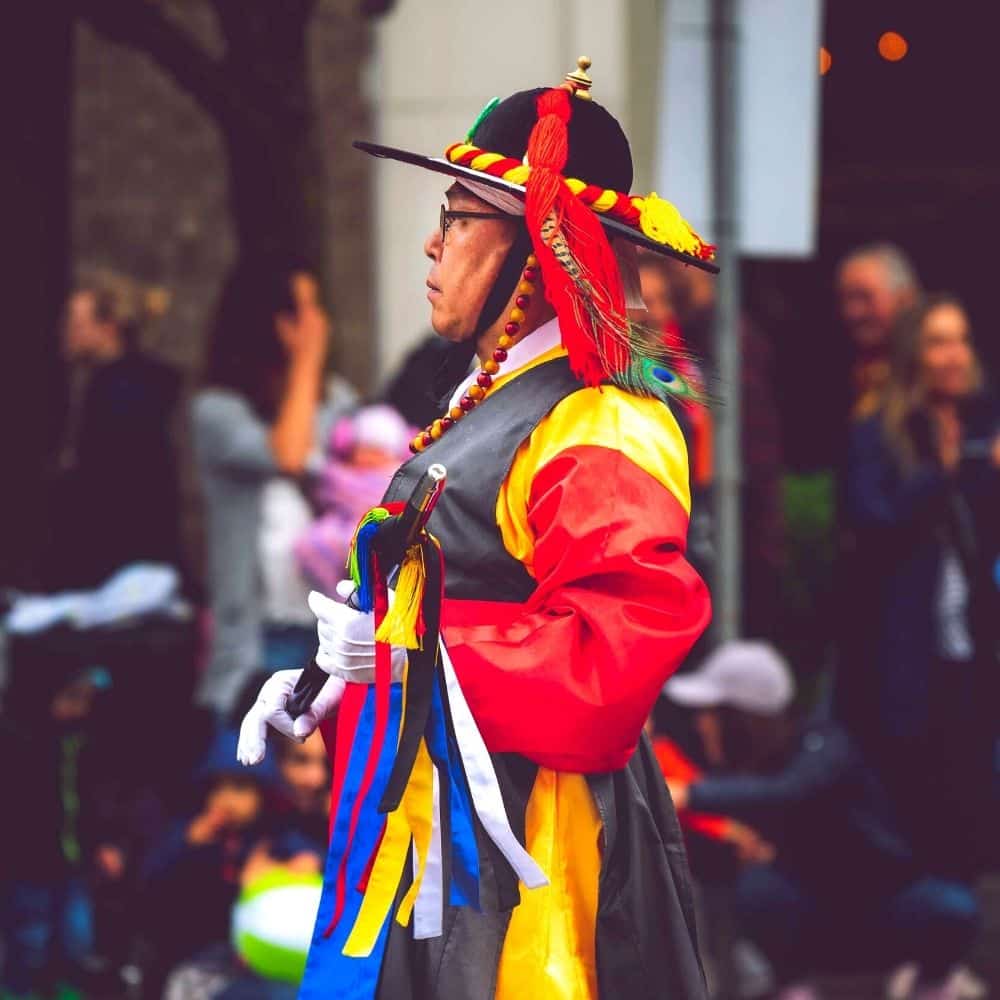
Worried about making cultural faux pas while out and about in the busy streets of Seoul? Want to know how to ride on public transport without upsetting anyone?
This next set of Korean etiquette rules will help you behave like a model member of Korean society when travelling and exploring in public. From public transport to public displays of affection, there are many areas where you’ll need to be careful in Korea.
As a foreigner, you won’t be expected to know these rules and Korean people will probably tolerate must culturally insensitive actions you take. But wouldn’t it be great to show that you understand and appreciate Korean culture by following these etiquette rules?
25: Don’t Take Reserved Seats On Public Transport
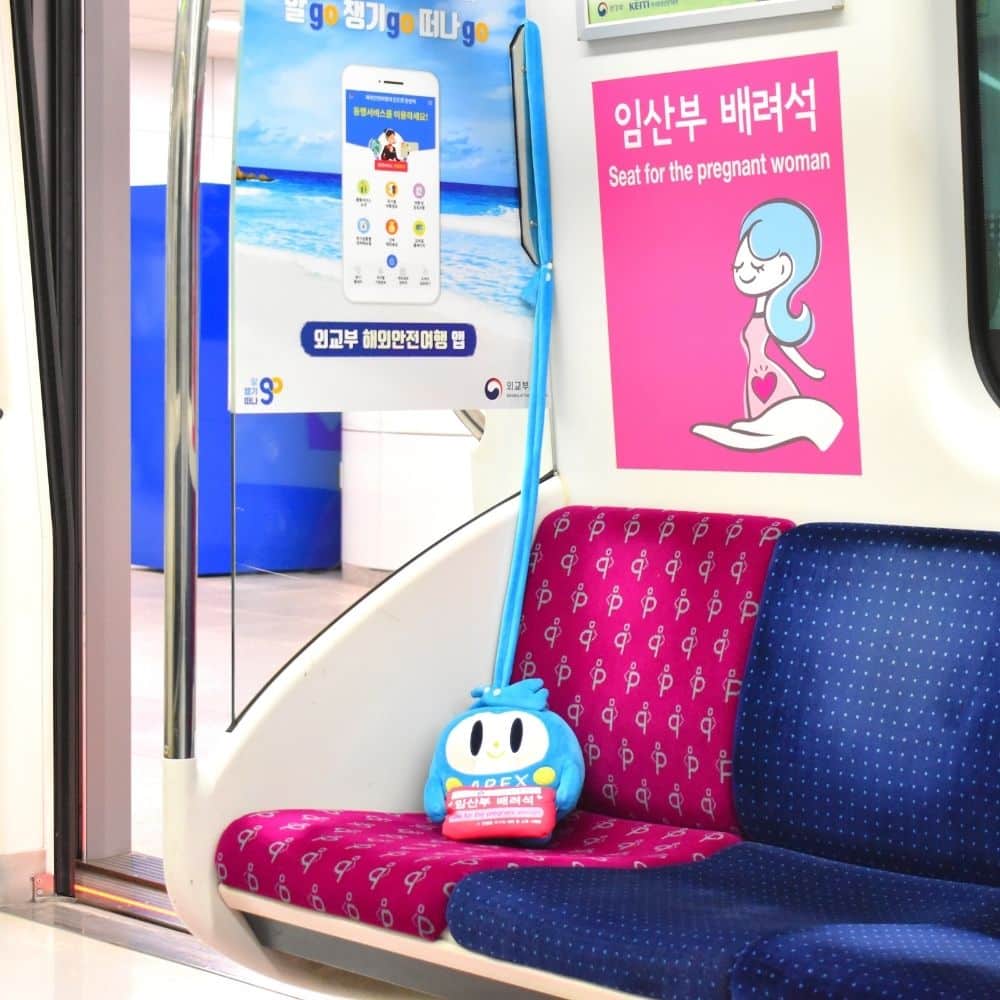
Korean subways and buses have reserved seats for people in need. It’s good manners to let people who need these seats take them. This includes the elderly, sick, young children, and pregnant women.
The end sections of subway carriages are reserved for travellers in need, while the seats closest to the door, as shown in the picture above, are reserved for pregnant women. On Korean buses, the reserved seats are usually brightly coloured.
Be respectful when you travel in Korea and avoid using these seats.
Don’t be surprised to see people sitting in the pink seats for pregnant women, especially during rush hour in Seoul. If you’re sitting in one, do the right thing and give it up for others.
26: Be Careful With Food And Drinks
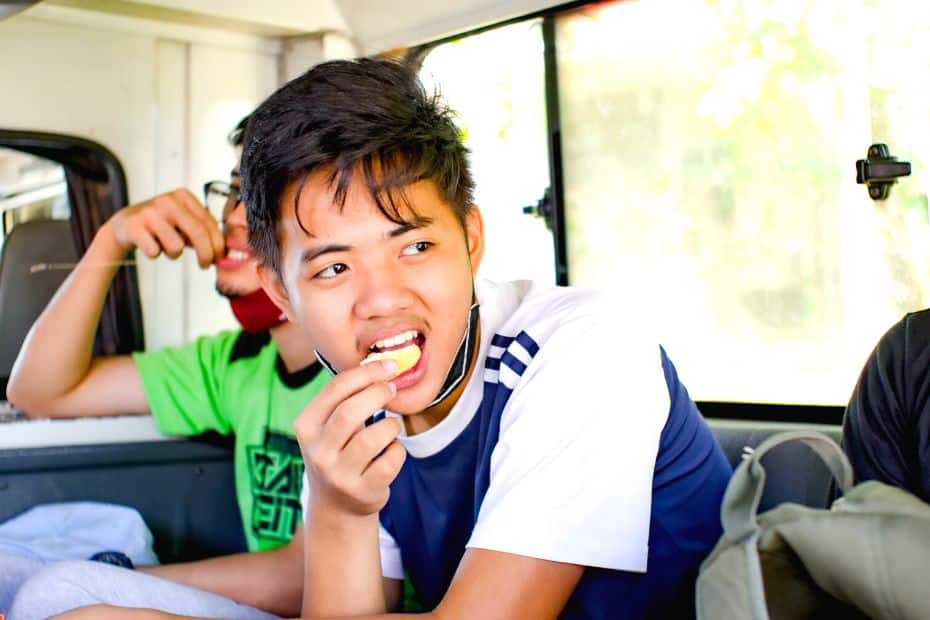
When eating and drinking outdoors in Korea, be mindful of your actions. There are not many public bins in Korea and people are expected to carry their trash home with them.
You shouldn’t leave litter on the ground just because you can’t find a bin. This is true when hiking in Korea as there are no bins on the mountain paths. One of my top Korean Hiking Tips is to bring a small plastic bag for food trash. This tip applies when out in Korea, too.
Another important consideration when eating and drinking is to be careful when using public transport. Seoul recently made it illegal to eat and drink on public buses. It’s still legal on trains, but try to be courteous and avoid smelly foods and take your trash with you.
Korean society seems unusually tolerant of public waste. I often see big mountains of rubbish in entertainment areas and dozens of coffee cups placed at bus stops, on bins, and anything else that’s off the ground. Fortunately, street cleaning is quick and effective in Korea.
27: Don’t Walk While Eating Or Drinking

Another way to cause offence when in public in Korea is to eat or drink whilst walking. It is considered rude and people are advised to stay still or sit down when eating or drinking.
This makes sense when you consider the danger of doing multiple things at once in a busy country where people move around quickly. It’s easy to bump into people or make a mess when moving and eating.
This rule isn’t strictly followed and many Koreans drink iced coffees as they walk (even in winter). Try to avoid eating messy foods or drinking from glass bottles as you move around and you should be fine.
28: Avoid Public Displays Of Affection
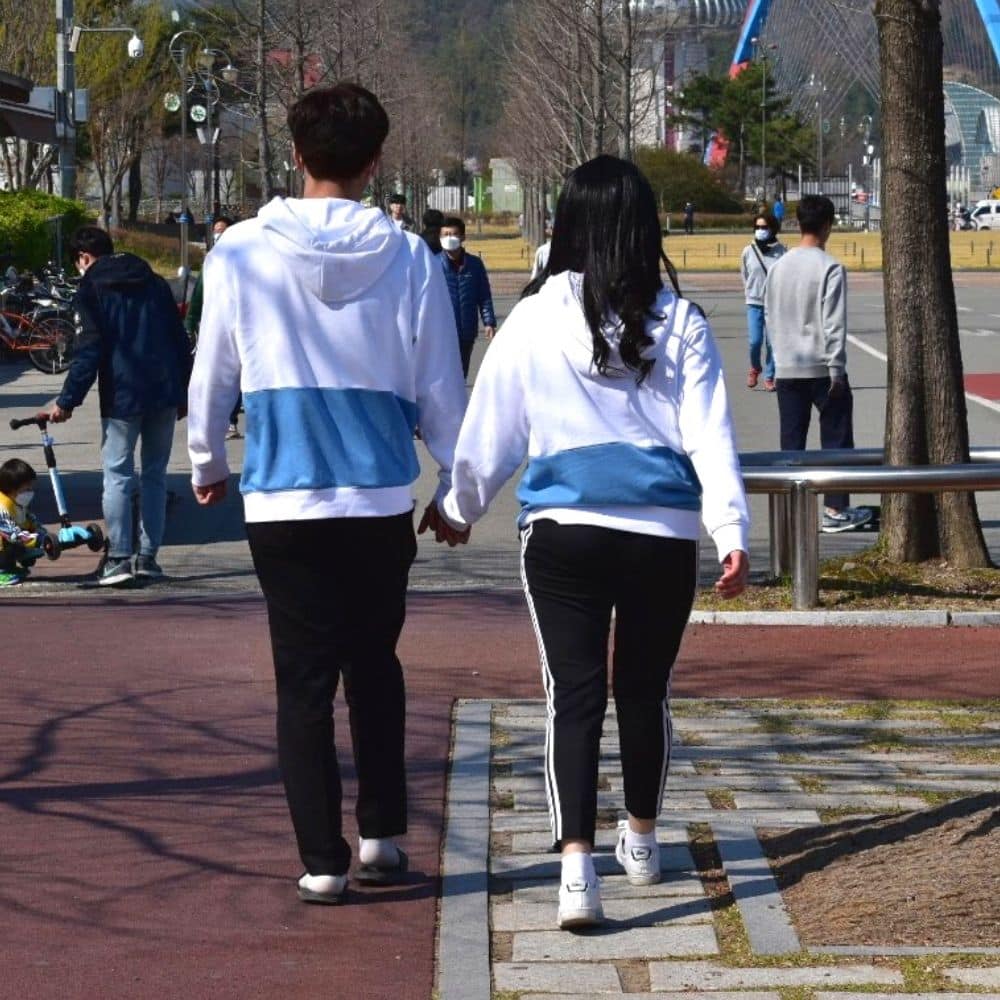
One of the Dangers Of Dating In Korea is that you can easily offend people by showing public displays of affection (PDA). Although not as strictly enforced as in some countries, public displays of affection such as kissing and hugging are frowned upon in Korea.
Korea is a conservative society and such displays will offend some people, older generations in particular. One way that couples get around this is by wearing couples clothing, showing that two people are in love enough to coordinate their clothing choices.
To avoid being rude in Korea, it is useful to know that public displays of affection can cause offence and upset some people. To show respect, try not to be too public with your shows of affection. Get some matching clothes for you and your partner instead.
This is definitely an issue for some people and I’ve personally been shouted at by older Korean guys for PDA offences. However, younger Koreans these days are a bit more open with their affection and you can see people kissing and hugging in public sometimes.
29: Don’t Blow Your Nose

Blowing your nose is considered rude in Korea, especially when done loudly and in public. Korean people tend to sniff a blocked nose instead of blowing it, even if that doesn’t actually solve the problem.
I’m not sure how this etiquette issue started, whether it is seen as unhygienic to blow your nose or if people never thought to carry a handkerchief with them for such emergencies and just got used to sniffing. It’s confusing as pocket tissues are sold in many places.
Whatever the case, from my experience, Korean people seem to be more comfortable sniffing instead of blowing and will look in disgust if you blow your nose, especially in a public place such as a restaurant or on public transport.
Korean people follow this etiquette rule and it’s more socially acceptable to constantly sniff than to blow your nose. Personally, I find it disgusting to loudly sniff repeatedly and will blow my nose in public in Korea. You might get some strange looks, but it’s a lot more comfortable.
30: Patience Is A Virtue And Queueing Is The Way
Korea is a polite society where pushing and shoving for your own benefit is considered rude and damages the harmony of society. Quietly queueing and waiting your turn is the norm in Korea and it is common to see organised lines waiting at subway, bus, and train stations, as well as in shops.
Trying to push ahead in a queue, or not waiting your turn is frowned upon in Korea. If you’re visiting Korea, it’s best to follow the example set by locals and be patient.
However, there is one big exception to this rule, which I’ll talk about next.
Ajummas: The Exception To The Etiquette Rules

You may have read these Korean etiquette rules and come to the conclusion that Korea is a wonderfully harmonious place where everyone is kind and polite in public.
While this is mostly the case for normal Koreans, there is one exception – the ajumma. Ajumma is the name given to middle-aged and above Korean women (typically over 50) who are the queens of Korean society.
After years of following strict etiquette rules and putting up with society, ajummas have earned the right to ignore the rules that keep society civilised and will instead push their way onto buses, shove you out of the way in a queue, talk loudly in public, and wear offensively bright clothing.
If you’re a fan of Korean dramas, you’ve no doubt seen plenty of ajummas before. Jean Yoon’s character in Kim’s Convenience is an ajumma (her name was Umma), albeit a bit more civilised than you might find in the wild.
Korea is definitely one of the safest and nicest places to be in public, but remember to beware the ajumma. Watch out for her colourful garb and keep a wide berth when possible. See the picture above for the identifying features of a Korean ajumma.
Korean Work Culture & Etiquette
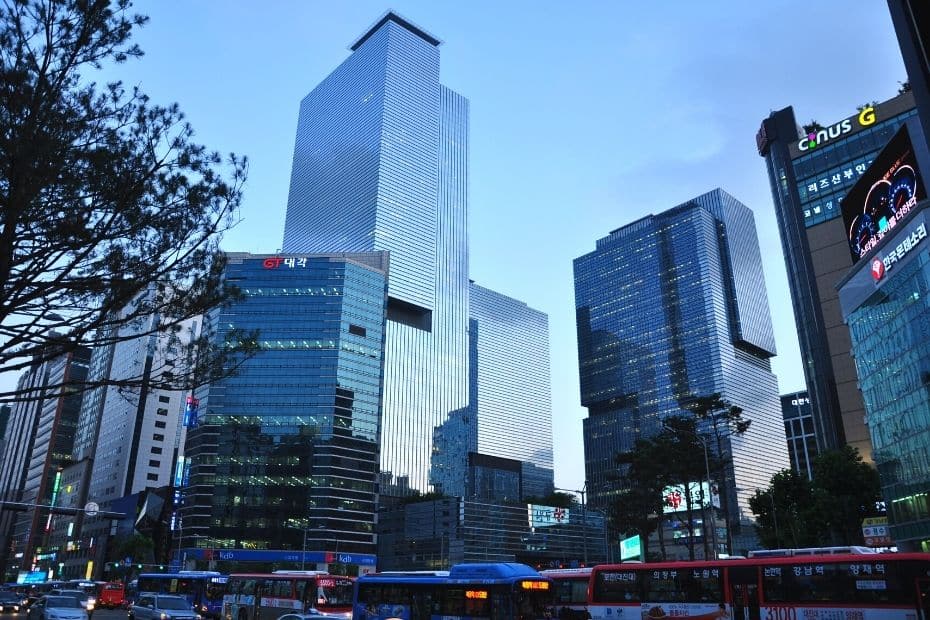
These final Korean etiquette rules and cultural insights are especially important if you’re travelling to Korea for business, or if you’re an expat in Korea like myself.
Understanding Korean etiquette and manners is perhaps more important in a business environment than when travelling as a tourist as the Korean business world is built on respect, hierarchy, and honesty. If you want to get ahead working or doing business in Korea, remember to show deference, especially to your seniors, and be friendly and honest to others.
Socialising outside of the office is a big part of work life, and many of the rules covered in the socialising section of this guide apply to business socialising, too. Often more strictly than in a purely social setting.
Read on to find out how to make a good impression at work in Korea and show you understand Korean work culture and etiquette.
31: Accept & Give Business Cards With Two Hands
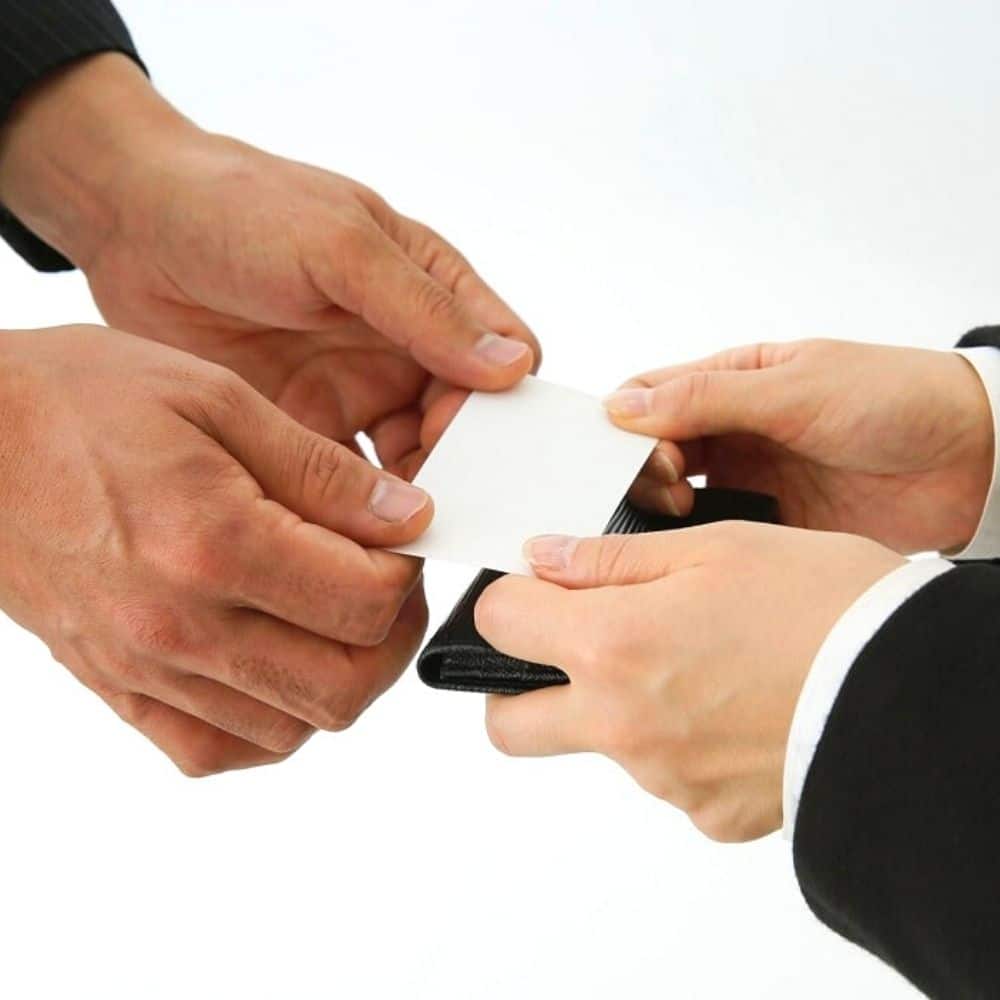
As mentioned several times before, it is best to give and receive with two hands in Korea, either with two hands at once, or with one hand resting on or under your arm.
With business cards in Korea, hold or receive the business card with both hands at the edge or the card and leave room for the other person to touch the other half of the card.
When given a business card, be sure to show respect to the card by looking at it and then treating it carefully. Don’t bend or dirty the card. Leave it on the table or place it in your wallet for safekeeping.
32: Use Formal Titles
Korean work places are traditionally very formal places where proper titles should be used, especially with senior members. Try to avoid using first names until someone has used yours, and even then stick to formal titles if the other person is your senior.
Full names, with the surname first, is the safest option if you don’t know someone’s formal title in a company. If you’re travelling to Korea for business, it might be worth learning a few titles for the people you are likely to deal with, such as ‘director’ or ‘manager’.
When sending emails, write your full name and refer to the other person by their full name, too. Try to avoid using just your first name as this might be seen as too casual.
This depends on where you work and the people in the organisation. For coworkers in a similar position, first names are usually OK. For management, formal titles are almost always used.
33: Wait For The Boss To Eat Or Drink
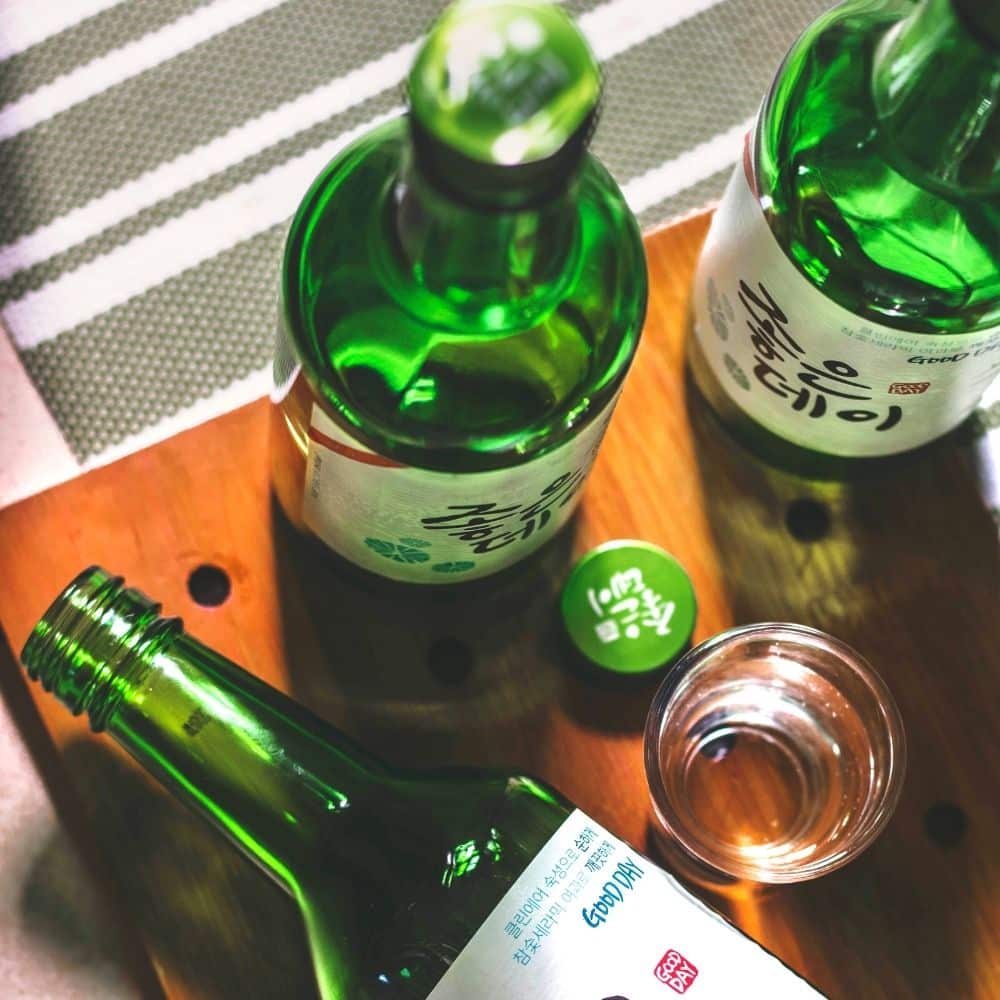
Hierarchy is important and Koreans expect respect to be shown to senior members. This can be done by waiting for them to take their seat first, as well as by waiting for them to eat and drink first.
At a Korean work meal or social event, the most senior member of the company will make a toast at the start and then take a drink. Other members should then also take a drink. Drinking before this is considered rude in Korea and can be disrespectful to the boss.
It is also expected that the most senior member will start eating first, and then other people can start eating. Similarly, when that person finishes the meal and is ready to leave, the whole team may be expected to leave, even if they haven’t finished eating.
I’ve been made to leave meals before I’ve finished as the director / principal was ready to go. Keep an eye on the most senior person at a work event and follow their lead. For meals out with coworkers, the system isn’t as strict, but still try to follow the lead of the most senior person.
34: Be Prepared To Sing Or Make A Speech
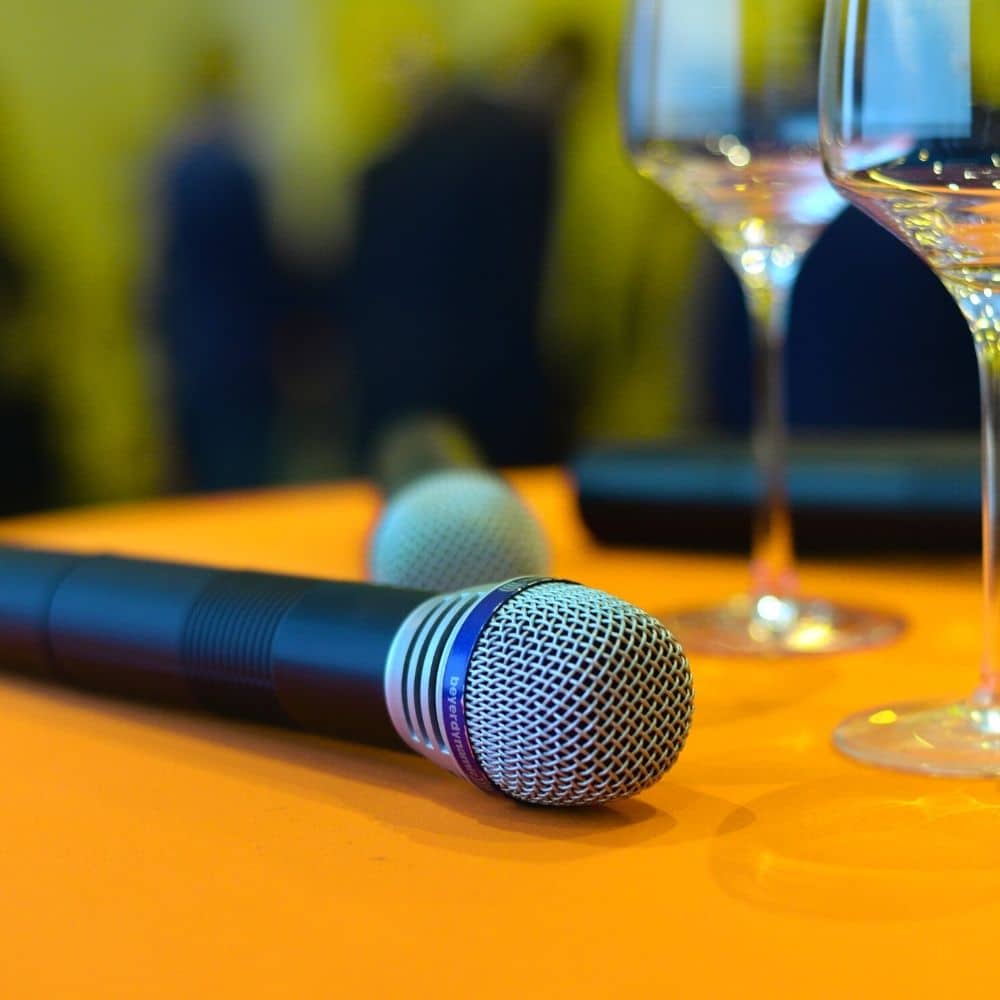
When invited out for a formal work event, such as a dinner or team bonding session (known in Korea as ‘membership training’), it is common for people to be asked to give a speech during a meal. Several speeches are usually made during the course of a meal.
As a foreigner in Korea, it’s likely that you’ll be invited to make a speech. Embrace the chance to practice a bit of Korean and the respect that is shown to you when asked. It’s a good chance to impress others and to create a good image in the company.
After-work parties often end up at a noraebang (Korean singing room) and you’ll almost certainly be expected to sing. Give it a go, even if you’re not a good singer. People will appreciate you willingness to join in and be part of the team.
Or your singing will be so bad that your boss will tell you never to sing in public again, which happened to me one time.
35: Group Harmony Is Number 1
Group harmony in a Korean work environment is very important and is the key to understanding a lot of the cultural differences between working in Korea vs. other countries.
Achieving group harmony involves following strict hierarchy rules and avoiding problematic situations, such as speaking against your superiors, not following orders, or being dishonest.
This aspect of Korean business culture can be difficult for non-Koreans to understand as it can go against what may be seen as common sense. For example, disagreeing with someone’s idea in a team meeting (especially the bosses) is seen as causing disharmony, even when it may be a better option.
If you want to know more about group harmony in Korean culture, this is discussed in more detail later on in this article.
You really have to experience this to understand just how deeply ingrained this is in Korean culture, but it’s useful to be aware that agreeing and getting along with others is really important.
How To Show Respect In Korea

Showing respect is the key to creating and maintaining a harmonious society, especially one where hierarchy is so important and individualism is surreptitiously frowned upon.
Here are three ways to show respect in Korea, including shaking hands correctly, bowing, and giving gifts. There are set rules that should be followed in each circumstance to avoid causing disrespect.
Learning these three simple ways to show respect will demonstrate that you’re sensitive to Korean cultural values and can help you fit into Korean society.
Korean Handshake Etiquette
Here are a few simple steps to help you master perfect Korean handshake etiquette.
- When greeting people in Korea, shake hands with both hands.
- Shake with your right hand.
- Place your left hand on the top of the wrist of your right arm or on the elbow.
- If the other person places their left hand on your hand, do the same.
- Bow forward slightly during the handshake with your head pointed downwards.
- Avoid direct eye contact if shaking hands with a senior work colleague or in a professional environment.
- Don’t squeeze too hard.
To avoid being rude when shaking hands, don’t put your non-shaking hand in your pocket. Leaving it by your side won’t be considered offensive, but it’s politer to shake with both hands.
Bowing Etiquette In Korea
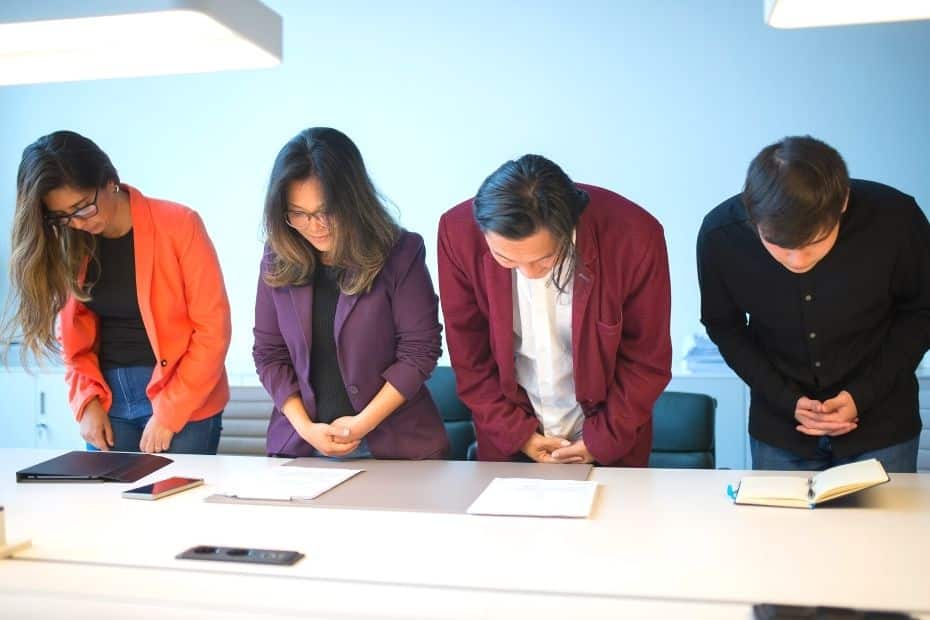
Bowing is a common way to greet people in Korea and to show respect in formal situations. Here are some simple steps to help you master a respectful Korean bow.
- Place your hands clasped together in front of you.
- Keep your head down to avoid eye contact.
- Bow forwards to about 45 degrees.
- Hold the bow for a few seconds.
When bowing to someone in a higher position, increase the bow a bit.
Bows typically don’t go more than 90 degrees in Korea and a deep bow like that is reserved for very formal occasions, such as when Moon Jae In met Kim Jong Un in North Korea.
Bowing At Korean Weddings
Traditional Korean wedding ceremonies involve lots of bowing, especially between the bride and groom as they complete various rituals, such as ‘hapgeunrye‘, which involves the couple drinking from a copper cup and represents the mixing of the two families.
There is also a section of the wedding called ‘paebaek‘, where the bride and groom will sit on their knees and bow down with their head touching the floor (grand bow) and then bow with their head slightly above their arms (half bow). This is to show the importance of family to the couple.
Japanese And Korean bowing Are Not The Same
Bowing is common in both Japan and Korea, but the methods of bowing are not the same and can actually cause offence for some sensitive people in either country.
A famous example of this is from a Japanese McDonald’s advert that showed ‘Korean bowing’ instead of typical Japanese bowing. Some Japanese viewers were outraged about the bowing technique used.
Japanese bowing, known as ‘ojigi‘ in Japanese, involves bowing with your hands at your sides. Korean bowing, known as ‘jeol‘ in Korean, involves placing your hands together in front of your stomach.
Deep bowing up to 180 degrees, which is typically reserved for public apologies in Japan, is not so common in Korea. If you bow too deeply, Korean people may think you’re ‘acting Japanese’.
Be careful bowing when travelling East Asia.
Korean Gift Giving Culture
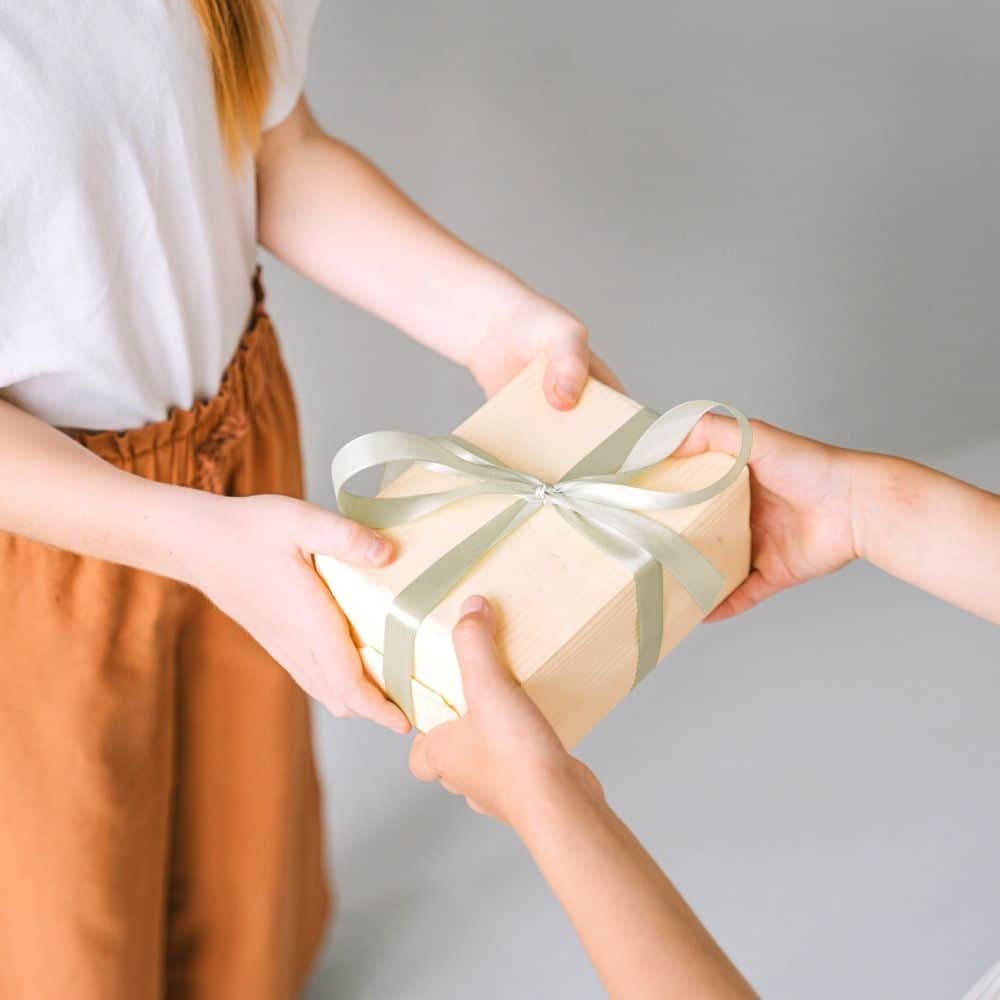
Gifts are exchanged in Korea for various social and work situations, such as when visiting someone’s house, for birthdays and holidays, and when starting a new job.
Here are some simple steps to help you respectfully give and receive gifts in Korea.
- Use two hands to give & receive gifts.
- Wrap the gift to make it look nice – visuals are important.
- Use light colours for wrapping, avoid red and dark colours.
- Don’t spend too much as you oblige the other person to spend as much.
- Don’t open the gift immediately unless encouraged to by the giver.
- Show your appreciation by commenting on the nice wrapping.
The rules will differ depending on the person giving or receiving the gift and some people, especially younger generations, may not care about any of these rules.
What Gifts Should You Give In Korea?
Good gifts to give in Korea include baked goods, sweets, and flowers. Bakeries in Korea usually have gift sets that are perfect for visiting someone’s house. Department stores are also a good place to buy gifts in Korea.
Suitable gifts from your own country can include local foods and snacks that aren’t available in Korea. However, be sure that you don’t bring in any ‘live’ food such as fruit or veg as it’s illegal to bring them into Korea. Chocolates, sweets, and teas are fine to bring into Korea.
If you’re working in Korea and want to make a good impression, bring in some traditional Korean rice cakes for your coworkers to share. However, they may prefer something from your own country or something sweet to eat instead.
When gifting to multiple people, such as in an office, individually wrapped, separate items are the best. Not only is it more hygienic, it also allows you to place a gift on each person’s desk, which is a common way to share gifts at work in Korea.
On November 11th, be sure to give a box of Pepero to your coworkers and friends as it’s Pepero Day In Korea. These cheap gifts are a great way to impress others and a delicious snack that can be enjoyed with coffee.
What Gifts Should You Avoid In Korea?
There are some gifts that are culturally sensitive and may make Korean people uncomfortable These include sharp objects, such as knives, because these items symbolise ‘cutting ties’ and this is the opposite of what you want to do when giving a gift.
Gifts in sets of four and cards written in red ink are also inappropriate in Korea because the number 4 and red ink both symbolise death. Red wrapping paper isn’t a good idea.
Don’t spend too much on a gift. Expensive gifts place a burden on the receiver to gift back a similarly expensive gift and might make them feel bad if they can’t match the cost of the gift.
Manners When Speaking Korean

This final Korean cultural consideration is one that will become apparent when you start to learn Korean or live in Korea – how to speak Korean without being rude.
The Korean language has been heavily influenced by Confucian values and social hierarchies, resulting in different forms of speech for different people within society.
The Korean language has 3 different forms – informal, formal, and respectful.
Informal and formal Korean, are mostly the same, with different conjugations to show varying levels of respect. Usually, the shorter the word ending, the less formal it is.
The respectful form is reserved for elders and superiors at work or in society. It’s also used by businesses and shops to show respect towards customers.
The respectful form of the language has unique vocabulary that you’ll need to learn. For example, the word ‘name’ is 이름 (i-reum) in informal and formal Korean, but is 성함 (seong-ham) in respectful Korean.
Here are the two forms of the verb ‘eat’ in informal, formal, and respectful Korean:
- Informal – 먹어 (meog-eo)
- Formal – 먹어요 (meog-eo-yo)
- Respectful – 드세요 (deu-se-yo)
As a tourist who might only know a few basic Korean travel phrases, you don’t need to worry too much about which form you use. However, if you want to learn Korean to live in Korea, you’ll definitely need to be aware that using the informal form of Korean with elders or superiors will be considered rude. If in doubt, use the most polite form you know.
Two Korean honorific titles that can help you show respect to strangers are -님 (-nim) and -씨 (-sshi). Nim is added to someone’s job title. Sshi is added to someone’s name and works like Mr. or Mrs. in English. You can add sshi to the first or last name.
If you’re interested in learning Korean and knowing more about the difference between the 3 types of language, I would recommend the Inner Circle Course With 90 Day Korean. You can get personalised feedback from tutors and lots of support and materials to help you learn Korean more efficiently.
Essential Korean Culture Insights
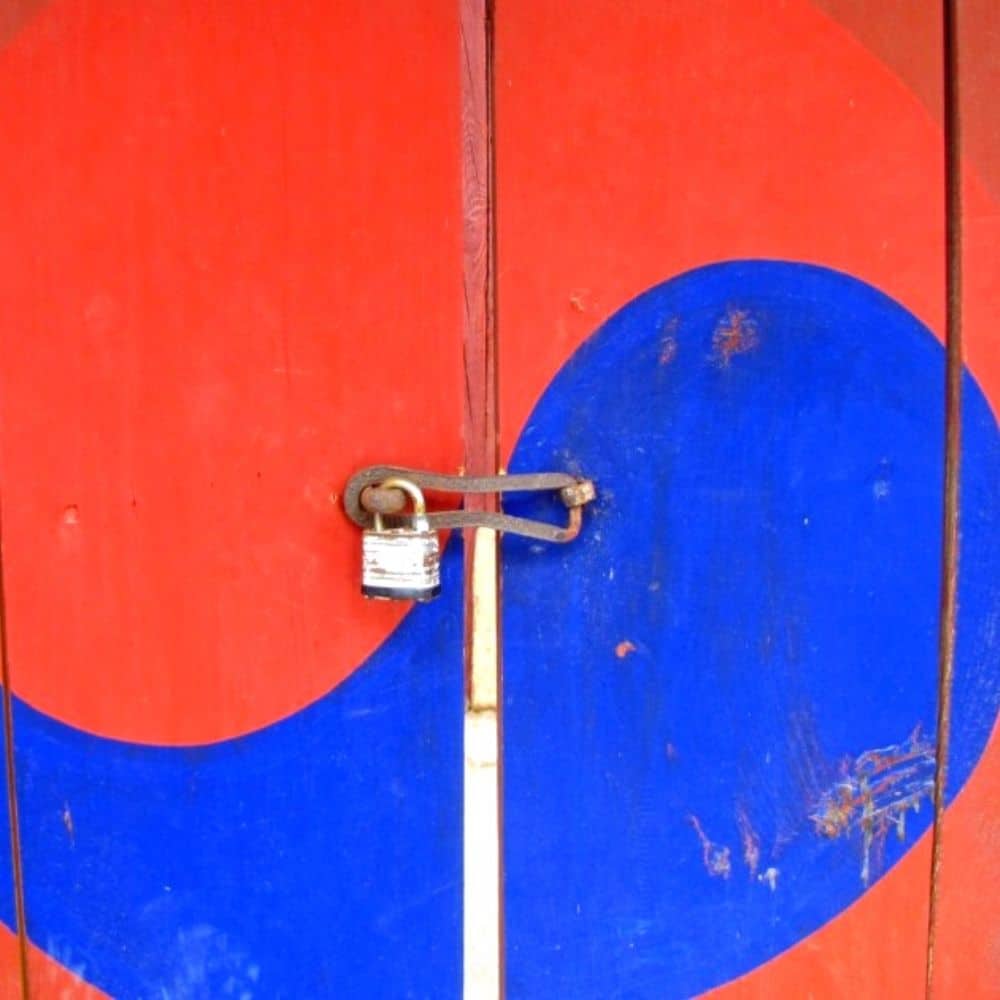
To appreciate these Korean etiquette rules, it is necessary to understand some basic principles about Korean culture and how it is different from other cultures.
There are 4 main aspects of Korean culture that have helped to shape and define etiquette, customs, and manners in Korea:
- Group Harmony
- Respect for Elders
- The Concept of Face
- Nationalism
These 4 key points only touch the surface of Korean culture, but should give you a basic introduction into what makes Korea so unique.
If you’d like a deeper insight into life in Korea, and some of the challenges and benefits you can experience, check out my article about Expat Life In Korea.
Group Harmony Vs. Individual Needs

The teachings of Confucius, a Chinese philosopher who lived around 2,500 years ago, have had a noticeable effect on Korean society since his descendants moved to Korea in the 14th Century.
Today, many morals and values in Korean society have the mark of Confucius, who promoted societal harmony, compassion, and empathy above individual needs and wants. So much so that Korea is known as the most Confucian country in the world.
I won’t give a detailed explanation of Confucian values, but it’s important to know that he believed people should put others before themselves. You can see this in the kindness towards friends and strangers in Korea, as well as in work environments where conflict is avoided at all costs.
People who disrupt the group harmony with their individual issues might be frowned upon. There is a saying that the nail that stands up gets hammered down. This helps create a harmonious society, but it can also cause problems for individualistic personalities.
As a traveller, this shouldn’t be an issue for you, but it’s important to know about so you can understand these Korean etiquette rules.
Respect For Your Elders
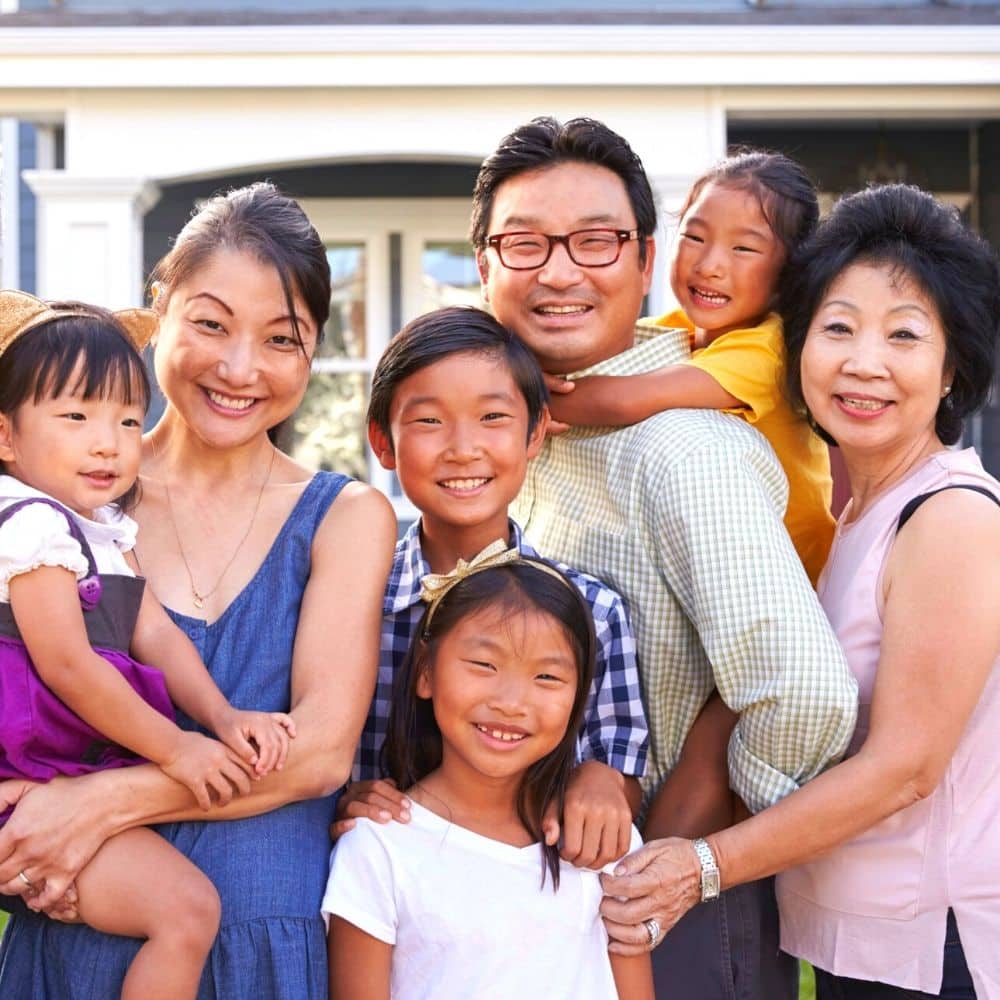
As with many cultures, respect goes upwards in age. This means that older people are respected more than younger ones. Due to Confucian teachings, age is even more important in Korean society.
Age in Korea can dictate the way you act or behave to someone, who gets to get on the subway first, who eats dinner first, and even who pays for meals when you’re out.
You might be asked your age so that people can figure out where you fit in the hierarchy. People will want to know what they can call you and if they should use certain language when talking to you. Therefore, you shouldn’t be surprised if this question comes up a few times. It can be shocking to be asked your age, especially if this is considered rude in your own country.
Although age and respect for the elderly are still an important part of Korean culture, there are also issues related to elderly poverty and the neglect of elderly parents by their children. If you’ve watched Squid Game, you might know what I’m talking about.
When you visit Korea, try to treat elders with respect, as I hope you would do anyway.
Kibun, Nunchi & Face

If you want to understand some of the more subtle aspects of Korean culture and etiquette, it’s useful to know a bit about kibun and nunchi. These will really help you avoid upsetting people unintentionally.
Kibun has no direct translation in English, but is a mixture of someone’s pride, face, dignity mood, feelings, and state of mind. When you attack or hurt someone’s kibun, you cause them to lose face. This reflects badly on that person within Korean society.
As mentioned, Korean society is based on group harmony, which involves mutual trust and respect. In order to protect this harmony, you should be aware of other people’s kibun, even if that means telling a small lie or doing something you’re not comfortable with.
Nunchi is the ability to determine someone’s mood and to know what needs to be done in order to avoid damaging their kibun. This is basically the ability to maintain peace within society. You can achieve nunchi by looking at other people’s body language and listening to how they speak. Even if someone doesn’t directly tell you something, they could be subtly suggesting it.
Kibun and nunchi are hard concepts to grasp and if you’re visiting Korea, don’t worry about them much. It’s useful to consider that people may agree to do things they’re uncomfortable with for the sake of maintaining kibun, or they may try to avoid conflicts at any cost.
Nationalism Is Strong In South Korea
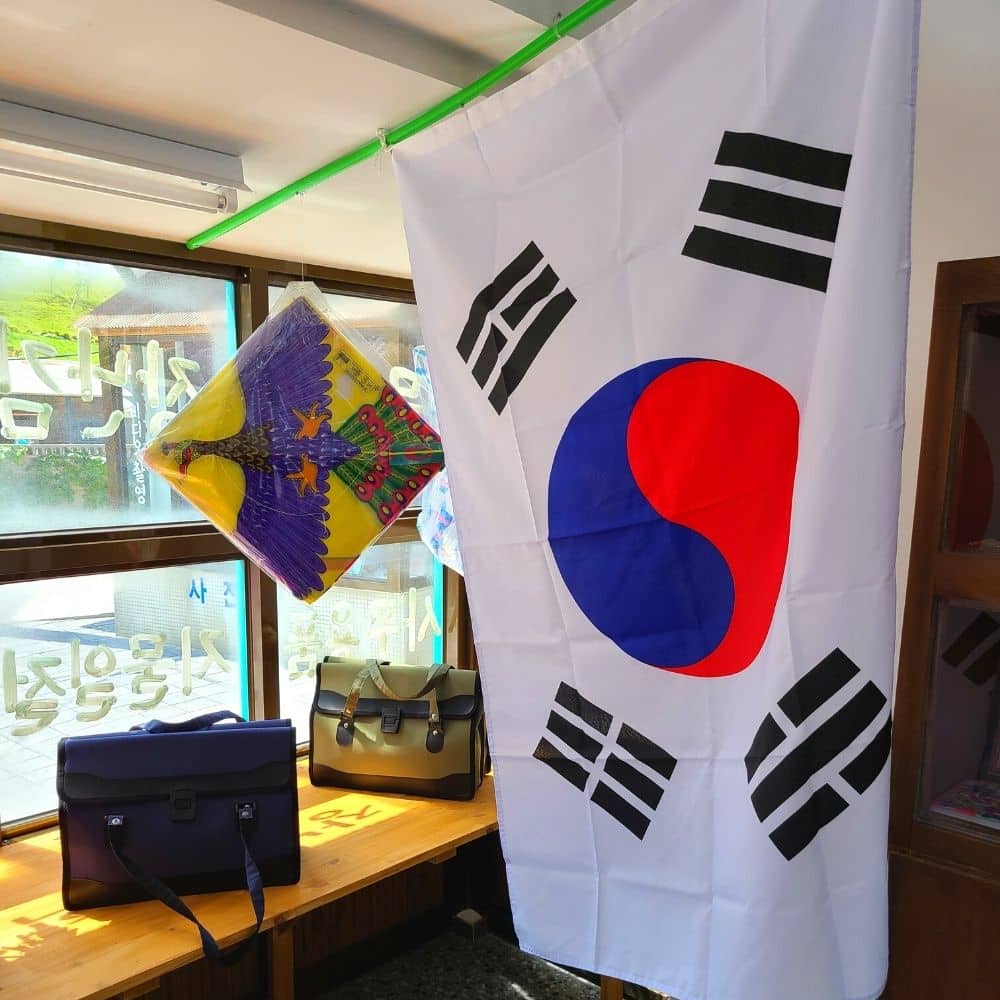
Korea has a high level of nationalism and people take pride in their country and national symbols, such as the Taegugki (national flag). Part of the reason for this stems from a history of battling between stronger, larger neighbours (Japan and China), as well as the ongoing conflict with North Korea.
Without covering the whole of Korean history, nationalism has been promoted to reinforce Korea’s national pride and unique identity. Having been occupied by Japan until 1945, the consequences of which were quite severe, Korea has worked hard to make its place in the world and to regain national pride.
Now, Koreans can be proud of their growing economic, cultural, and sporting achievements on the world stage. If you want to make friends in Korea, it’s always good to point out these achievements
Learn More About Korean Culture
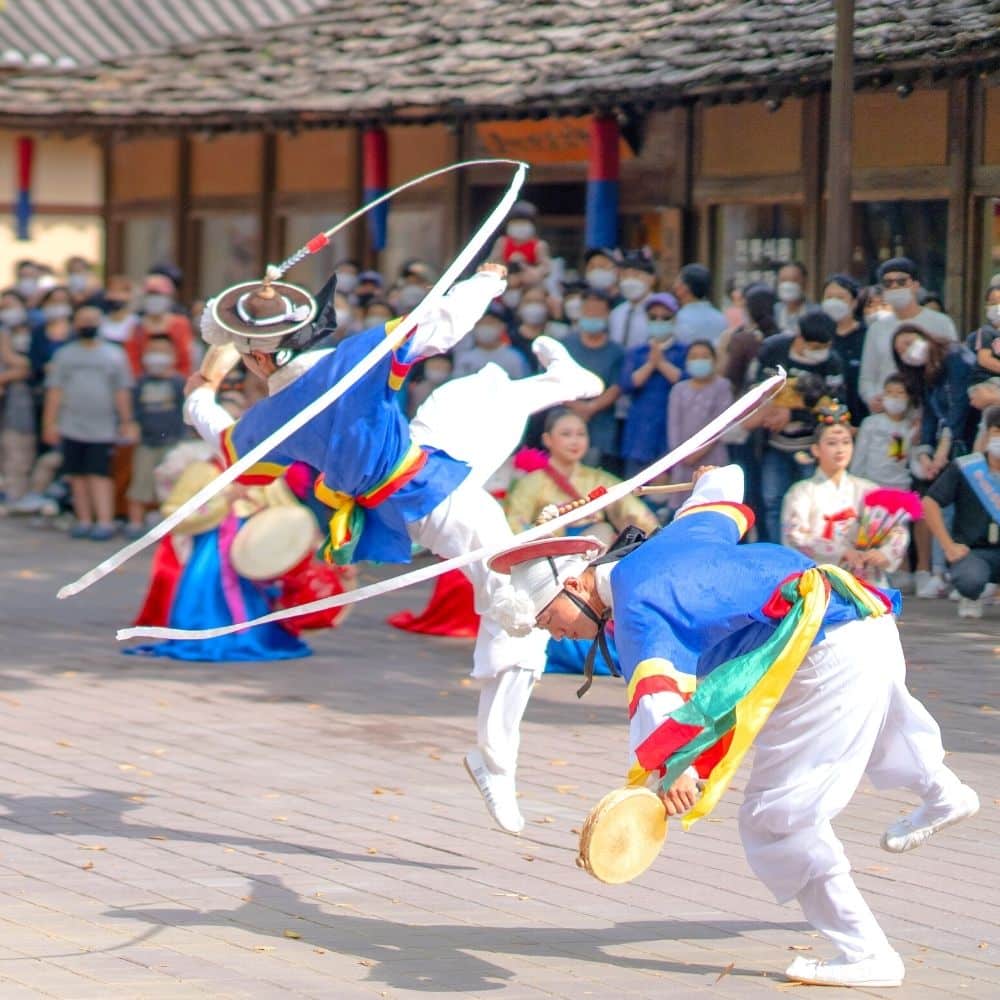
If you’ve enjoyed this article about Korean etiquette, culture, and manners and want to know more about Korean culture, then check out some of my other articles.
South Korean Cultural Facts: Discover 50 amazing facts about Korean culture, offering insights into the history or Korea, Korean people, Korean nature, and more.
Unique Korean Experiences: Create an unforgettable Korean bucket list with these 50 uniquely Korean experiences and activities.
I strongly encourage you to check out some translated Korean novels, too. These are excellent ways to not only learn about Korean culture in an interesting way, but to also discover more subtle, hidden aspects of life in Korea. Try applying the etiquette tips covered in this article when you read them, too.
Korean Etiquette FAQs
Finally, here are a few FAQs about Korean etiquette, culture, and manners, in case the above information didn’t cover enough for you.
What is considered rude in Korea?
Some things that are considered rude in Korea include writing someone’s name in red ink, blowing your nose loudly in public, public displays of affection by couples, wearing shoes inside someone’s house, and crossing your legs in front of someone.
Is it rude to cross your legs in Korea?
Yes. It is considered rude to cross your legs in Korea, especially when sitting opposite someone. Crossing your legs is considered disrespectful and gives the impression of being lazy. It’s particularly inappropriate in a work environment and in front of a superior.
How do Koreans shake hands?
Koreans shake hands with two hands at once. One hand is used to shake while the other hand is placed on the shaking hand, on the wrist or arm of the shaking hand, or around your waist under your shaking hand. The position of the non-shaking hand implies different levels of respect, with the closeness to the shaking hands most respectful.
Why do Koreans bow?
Koreans bow to show respect and to greet people. Bowing is also used in formal situations to show respect to a person, institution, or idea. Koreans bow during the national anthem, to show respect to parents and each other during weddings, and to apologise for a wrongdoing.
Do you tip in South Korea?
Most of the time, people don’t tip in Korea. Tipping is not part of traditional Korean culture as it is expected that people will work hard and offer good service with the need for extra reward. This is based on a person’s desire to uphold social harmony, based on traditional Confucian ideals that are central to Korean society even now. Tipping is acceptable in some situations, such as when taking a guided tour and some foreigner-focused businesses may add a service charge to bills. However, tipping is generally not expected in the majority of Korean businesses.
Is pointing rude in Korea?
It is rude to point in Korea, especially with the index finger. Gesturing with the whole hand or waving is preferred. Using the middle finger is rude in Korea, but the ‘V’ gesture (reverse peace sign) that is rude in the UK isn’t considered rude in Korea.
What are some Korean gestures of respect?
Bowing, giving gifts, and shaking hands are gestures of respect in Korea. Avoiding eye contact and using two hands while bowing, giving gifts, and shaking hands is considered polite. Using honorific titles for strangers or superiors at work also shows respect, as well as using the respectful form of the Korean language, which is different from the regular Korean language. Showing respect to elderly Koreans is expected and can include giving up your seat on public transport, holding the door for them, using respectful language, and agreeing with them.
Liked This? Pin It For Others
If you enjoyed reading this article, then please share this with your friends on Pinterest.
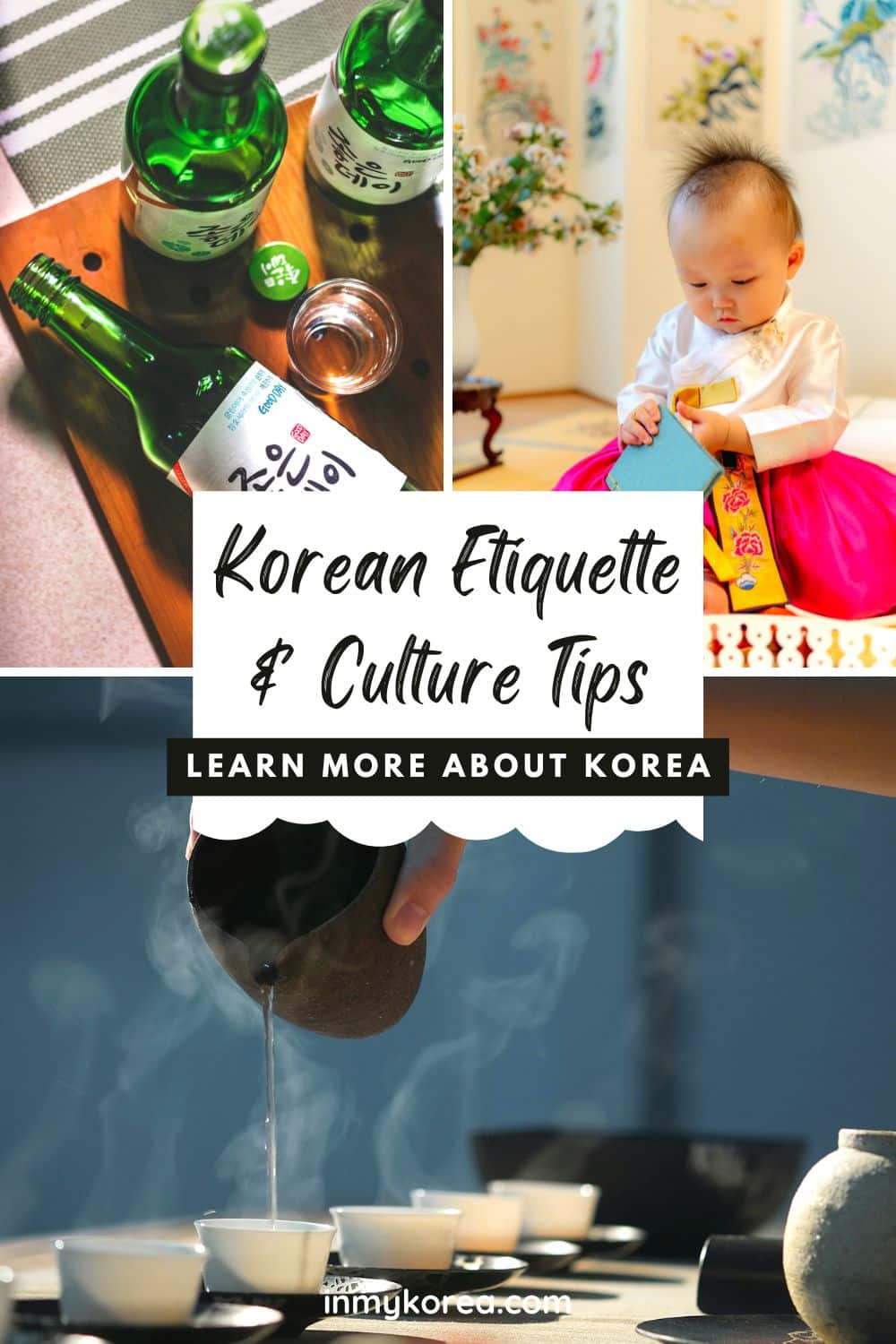
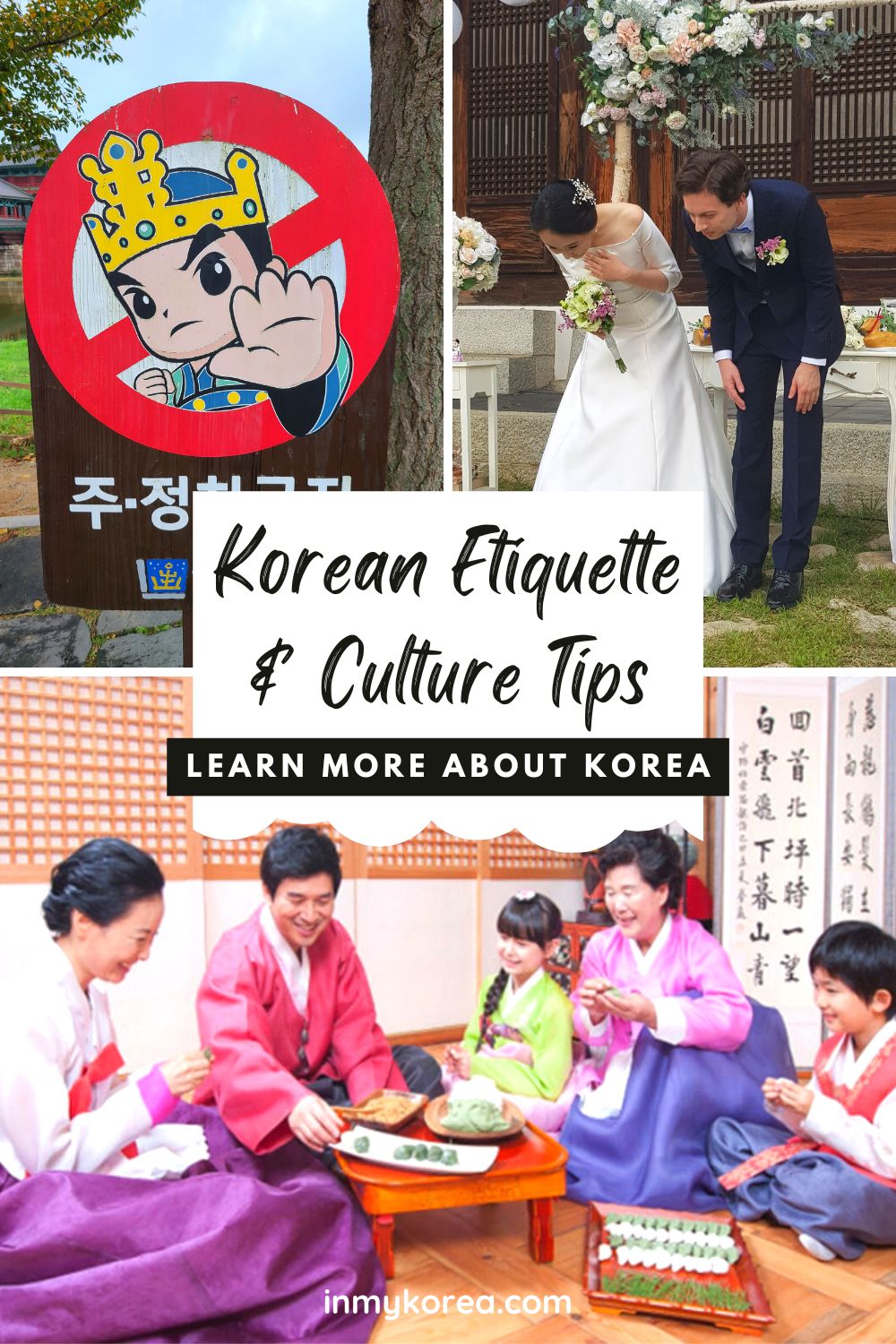
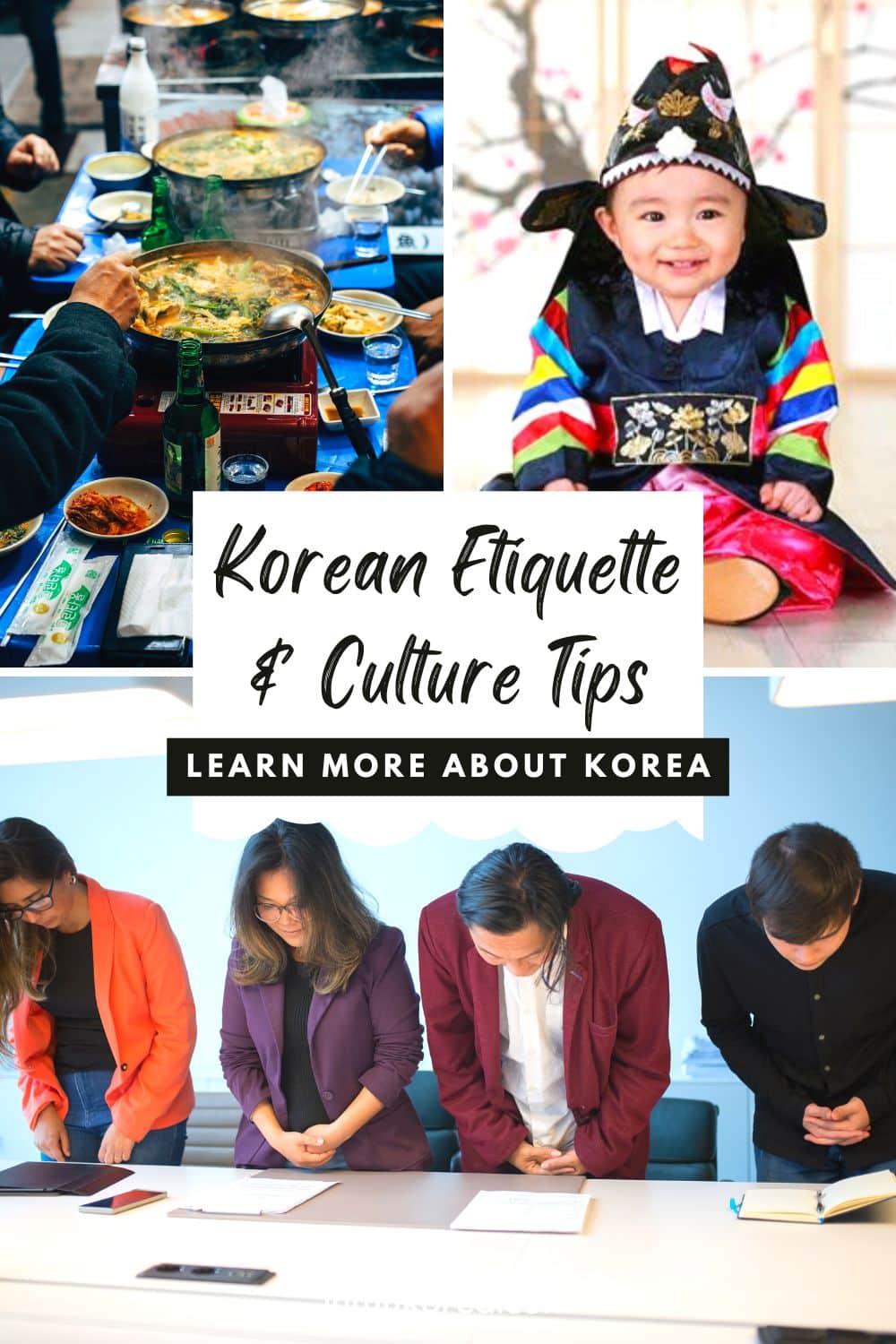


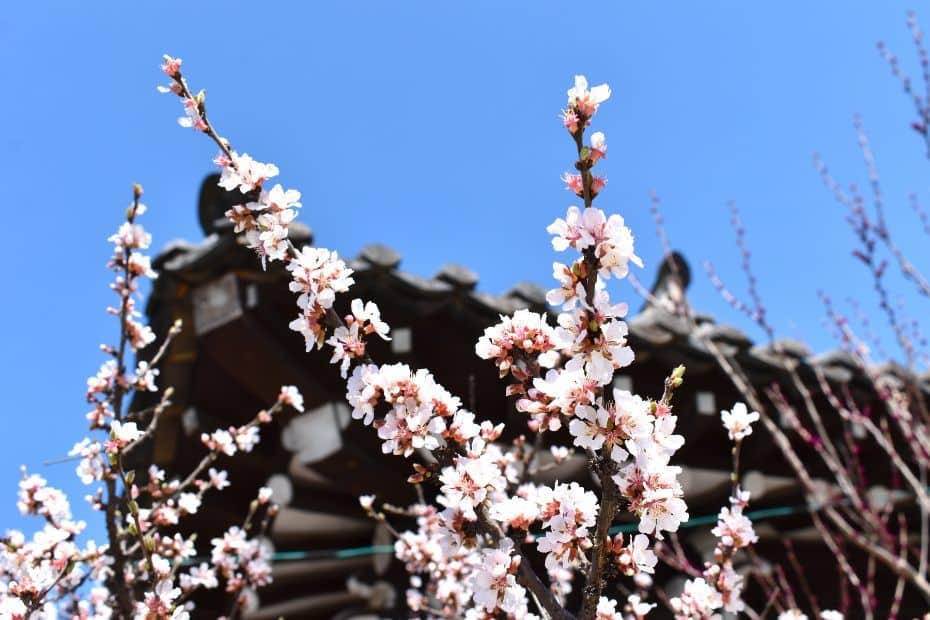
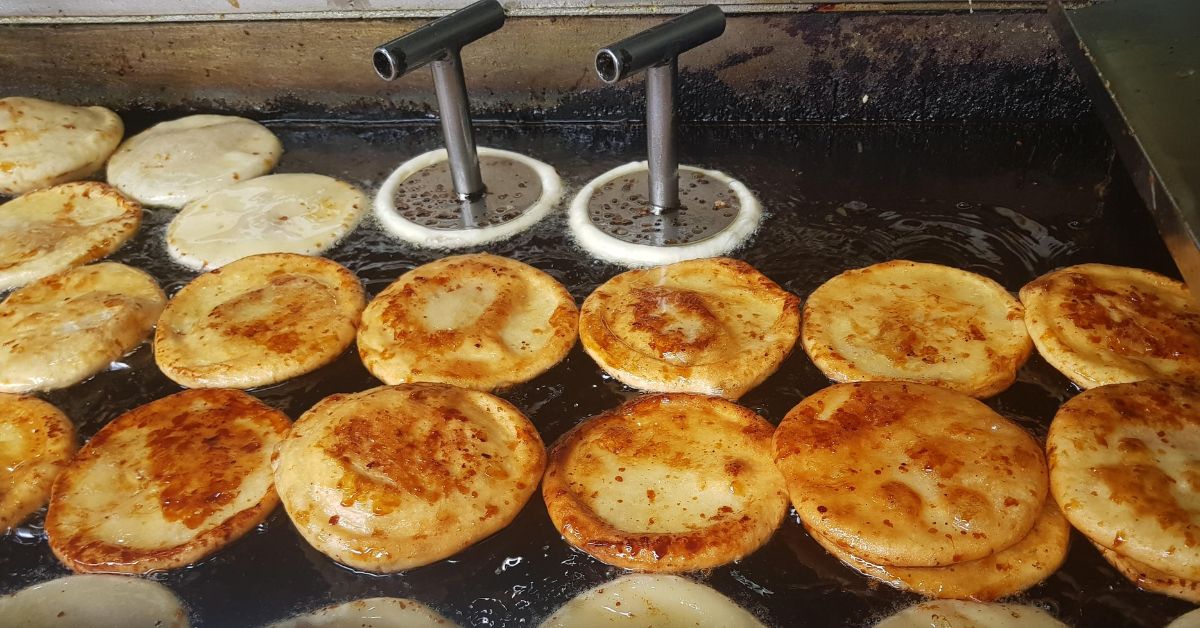


This article was great, and I used it for a business communication class at the University of Arizona Global Campus. Thank you for writing it.
Thanks, I’m glad you found it useful. Hope the students learnt a lot from it.